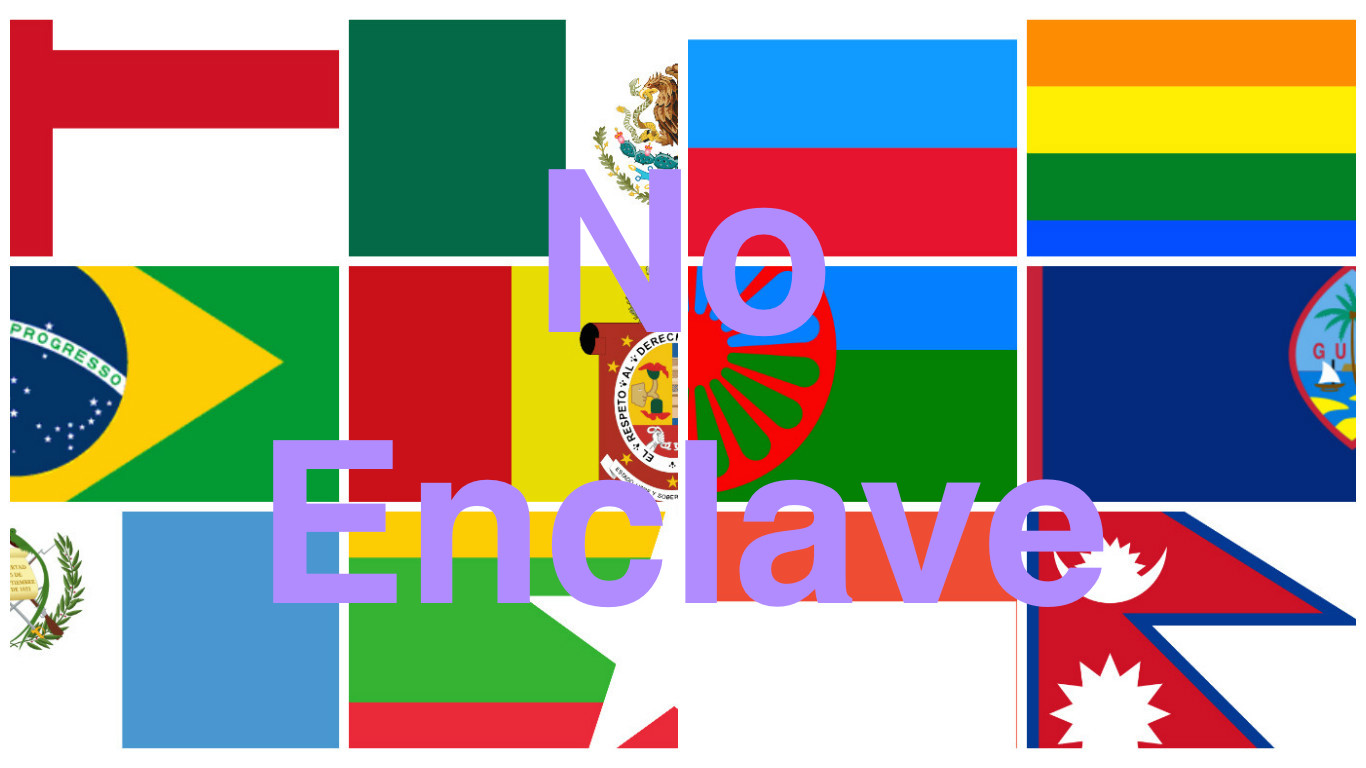
Diversity has long been part of the fabric of Los Angeles and Southern California. Humans first arrived here at least 13,000 years ago and more than twenty Native American nations made their home here before the Spanish Conquest. The Spanish pueblo of Los Angeles was itself founded by people of Native, African, European, and mixed ancestries and in its early years as an American city it attracted substantial numbers of Armenians, Basques, Canadians, Chinese, Dutch, French, Germans, Irish, Italians, Japanese, Jews, Mexicans, Russians, Serbians, Sicilians, and others. For some, ethnic enclaves came into existence (and in many cases vanished). Other people have tended to spread out across the region rather than cluster together — which makes exploring their presence in Southern California more difficult but no less rewarding.
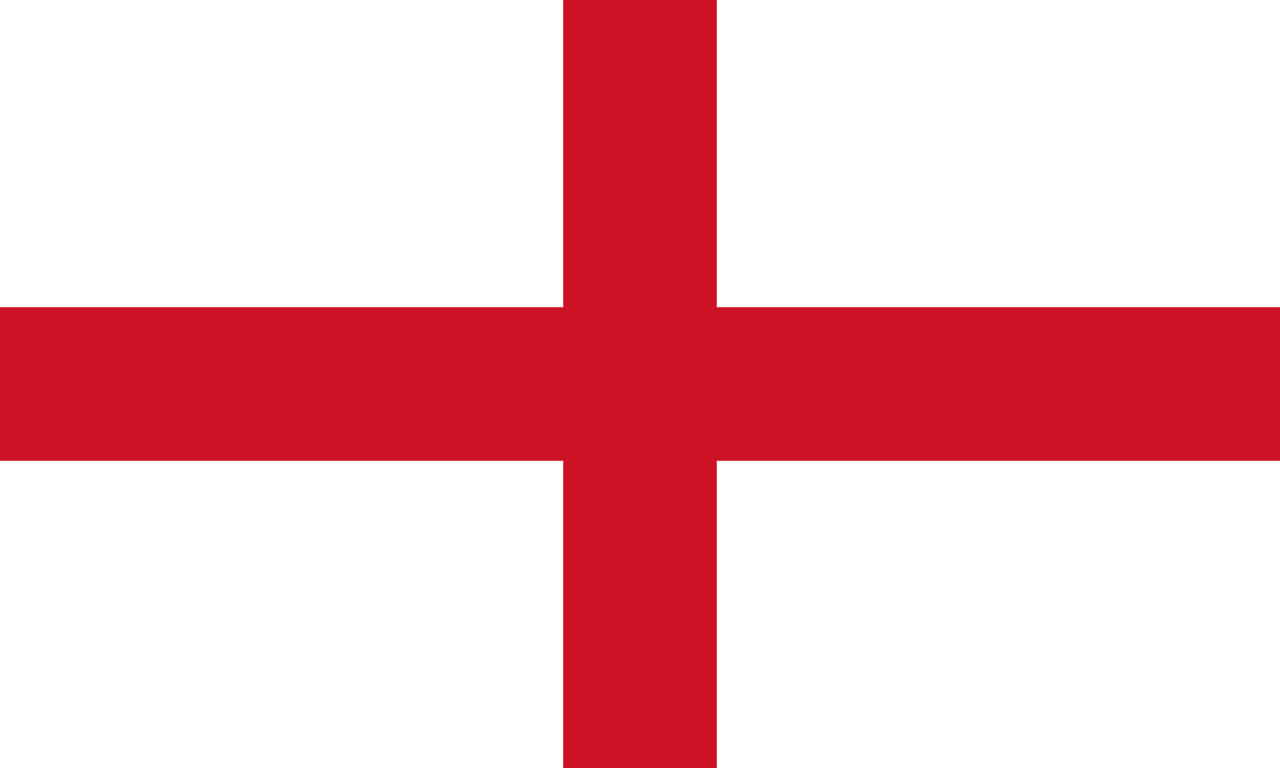
By many measures, Los Angeles is the most diverse place on Earth. One of the many ethnicities present in the region’s population is English-American. It seems to me that there’s little real connection between American-born Angelenos of distant English heritage with their ancestral homelands, which is why I’m not going to discuss them here. On the other hand, English immigrants are much more visible and are thus the primary focus of this episode of No Enclave.
ENGLAND AND AMERICA
“Do you know all the history of the British Isle? Were you born to be servile?”
— Luke Haines “England vs. America”
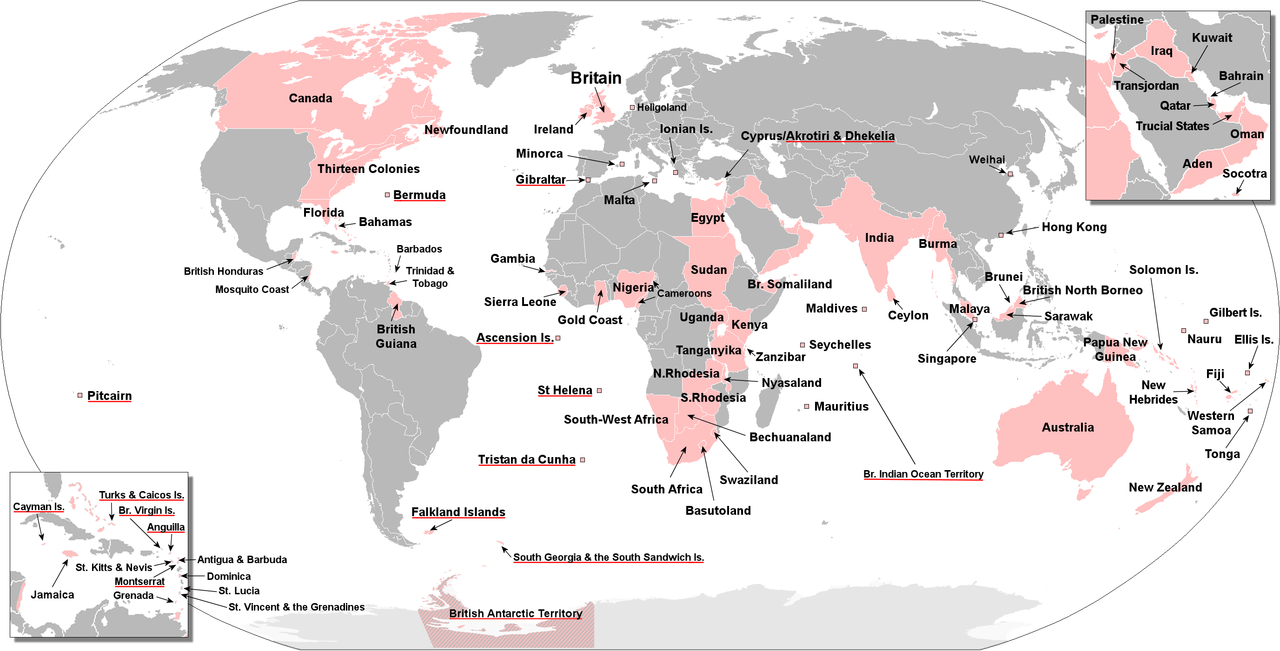
The US and UK are both cultural descendants of the British Empire. The United States voted to become independent from Great Britain on 2 July 1776. The United Kingdom of Great Britain and Northern Ireland, on the other hand, remains a constitutional monarchy with a royal head of state which British taxpayers subsidize the lives for the bargain annual price of £35.7million.
Naturally, the UK’s official language is English. The US has no official language although approximately 80% of Americans speak some dialect of English. Although many modern Britons view all forms of American English as aberrations of British English, in fact, both have evolved considerably since the 17th Century and some dialects of American English (e.g. the dialect spoken in East Kentucky) are purported by some scholars as being closer to the English spoken during the colonial era. On the other hand, 193 countries use metric measurements whilst only the US, Liberia, and Burma cling to the British Imperial system, based upon stones, the length of Henry I‘s arm, and the distance between cricket wickets.
“The American does not exist. Everyone is Italian-American, African-American and so on.”
More than any other American ethnicity, English-Americans are often considered to be unhyphenated Americans, a people whose ancestors magically sprouted from Appalachian soil and just happened to look and speak English. For many Americans, “English-American” isn’t an ethnicity at all — it’s Americans’ ground zero, a blank slate — for them, “ethnic” means “any ethnicity other than English-American.” Similarly, “American culture” means “English-American culture” and the term “English-American” is reserved for the first-generation English immigrant, not the American whose forebears colonized Jamestown four centuries ago.
Eight out of ten of the most common family names in the US originated in the British Isles but in the last census only 9% of Americans identified as English-American. Of course, trans-Atlantic slavery and the Americanization of non-English names means that not everyone with an English surname is of English ancestry but 9% is, objectively speaking, an undercount. Most English-American respondents merely listed themselves as “American.”
English-American is as much an ethnicity as any and hardly the default background of most Americans and certainly not Angelenos. Most Angelenos of distant English-American ancestry (that I know) have little cultural connection to the UK. I went to England for the first time in June and although I enjoyed myself (and even visited the village of Brightwell) I didn’t in any way feel like it was a homecoming of any sort. I even went to Brightwell Manor but although someone drove up in a pick-up as I stood in the driveway, I was not welcomed inside.
Whereas most Americans of distant English ancestry reject the notion of being ethnic and claim merely to be American, recent English immigrants seem more than any other ethnic group to embrace their status as “perpetual foreigners” — almost always reserving the term “expat” for themselves and almost never using the term “immigrant.” I suspect that this special status is part of the reason so little has been written or said about English-Americans as an ethnicity in Los Angeles. There is no Images of America book titled The English in Los Angeles, there’s no entry on English-Americans in the Los Angeles A to Z: An Encyclopedia of the City and County, and “Anglo,” here, is almost always understood to be short for “Anglo-American,” a non-ethnically-specific counterpart to “Latin-American” and not specifically Americans of English ancestry. There is no officially recognized English-American enclave, as far as I can tell, anywhere in the world.
AS AMERICAN AS APPLE PIE
“In America, there are fifty-one states… or maybe it’s eighty by now. Does England count? I’m not quite sure.”
— Bruce McCulloch “In America“
Many of the things which we think of as symbols of America have surprisingly deep roots in England. Actual American culinary inventions include cashew chicken, chili con carne, fajitas, fortune cookies, French dip, Pasta Primavera, and succotash. On the other hand, ice cream, potato chips, soda, and apple pie were all invented in England. How many ’70s and ‘80s kids watched The Tomorrow People and thought that St. Paul’s Cathedral, shown afterward in the Thames Television ident, was the US Capitol? Even the American flag — that uncontroversial, morally unassailable emblem of righteousness — is based on the design of the British Grand Union Flag. Of course, the cultural exchange flows in both directions and clichés like “stiff upper lip” which are almost universally regarded as Britishisms actually have roots in the US.
CALIFORNIA VS. ENGLAND
California, conquered and named by the Spanish, hasn’t as much of a cultural connection with England as does most of the US. 45% of Angelenos speak a language other than English at home. If English culture can anywhere be characterized as “exotic,” it’s Los Angeles. Although the demographic percentage of English-Americans in California is small, California is three times larger than England and is home to more English-Americans than any other state in the US by quite a large margin (even Southern California is 15,970 square kilometers larger than England). Nearly one in ten Britons live permanently abroad and nowhere has a larger population than the Los Angeles area.
Personally, the weather in Southern California is my least favorite thing about the place but I realize that this places me in a very small minority. Offer people from anywhere in the world a weekend vacation to either the North York Moors or Palm Springs and I reckon about 99.7% would choose the latter (see Your underwhelming UK holiday photographs) but if 350 annual days of sun are your thing wouldn’t you choose somewhere which also has universal healthcare, great public schools, excellent public transit, and less gun violence? Somewhere like Australia? OK, so Australia is home to the largest population of overseas English.
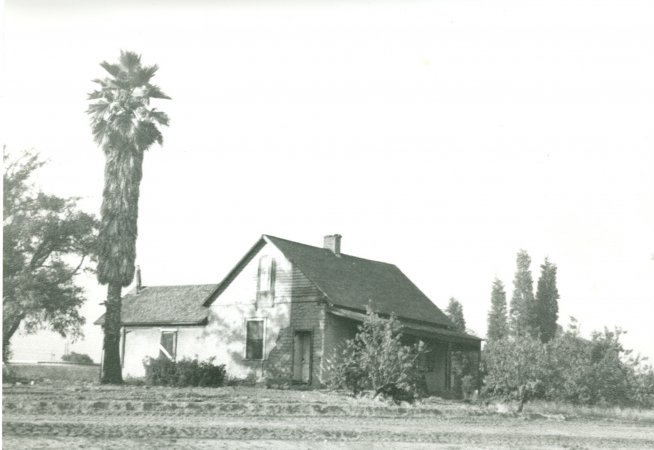
The first Englishman to arrive in the Mexican Pueblo de Nuestra Señora la Reina de Los Ángeles was possibly Michael White, an English sailor born in1801 who emigrated to Spanish California in 1829. Around 1845, White received a 32-hectare land grant and built an adobe that still stands in the city of San Marino.
James Johnson arrived via boat from Sonora in 1833 bringing with him Mexican and imported Chinese goods. He purchased Rancho San Pedro and became a powerful, local cattleman.
William “Don Julian” Workman, born in Temple Sowerby, Westmorland, and who as part of the Workman-Rowland Party arrived in Mexican Alta California in 1841. Workman played a leading role in the insurrection of 1845 against the Mexican government during the Mexican-American War and was rewarded, for his part with a huge land grant which included the land of the Mission San Gabriel Arcángel.
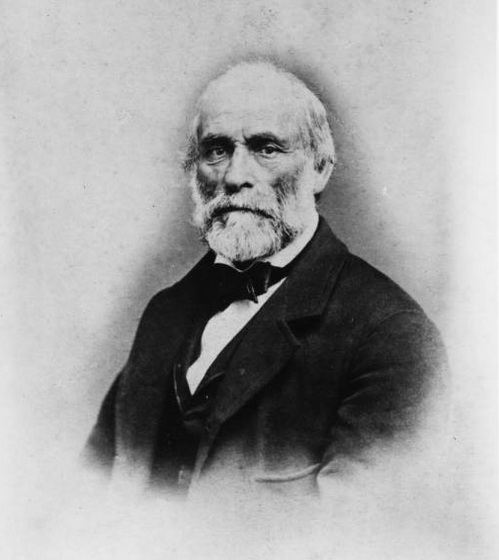
Henry “Don Enrique” Dalton was a wealthy English merchant who moved to Los Angeles in 1843 and operated the Enrique Dalton & Co. trading company. The following year he bought Rancho El Susa from Luis Arenas and renamed it Rancho Azusa de Dalton.
The first significant wave of English immigrants to California was attracted not by sun and surf but by gold — and they weren’t alone. The California Gold Rush (1848–1855) attracted tens of thousands of Mexicans, Chinese, Australians, Filipinos, Basques, Turks, and Britons. British manufactured goods were also in high demand.
After World War II approximately 70,000 British “war brides” moved to the US, but in early California, another small but substantial wave of immigrants arrived in search of fame in Hollywood.
WILLIAM E. WILLMORE — THE FATHER OF LONG BEACH
William Erwin Willmore was born somewhere in England around 1844. Following the death of his mother, young William and his father moved to California in 1855. He was a manager of the California Immigrant Union, which formed in 1869 to promote the settlement of the state. In 1882, he founded a colony called Willmore City. His farm community failed and Willmore was was bought out by a Los Angeles syndicate called the Long Beach Land and Water Company. The city incorporated, as Long Beach, on 13 December 1897. Willmore became one of Long Beach’s early neighborhoods. Willmore died on 16 January 1901 and was buried in Long Beach Municipal Cemetery.
ENGLISH IN HOLLYWOOD
The British film industry and Hollywood have always been unhealthily close. Many commercial British films are actually Hollywood/British co-productions and when they’re not, the end results are still virtually indistinguishable. Since the beginning of Hollywood, English filmmakers have been instrumental in shaping the identity of American commercial cinema.
Even before the motion picture, there was English photographer Eadweard Muybridge whose photographic studies seem to have anticipated the motion picture. In 1850 Muybridge immigrated to the US. In 1855 he first arrived in California. He led a bizarre life too remarkable to go into here. If you’re interested, seek out Thom Andersen‘s film, Eadweard Muybridge, Zoopraxographer (1974).
The first film shot in Hollywood was D.W. Griffith‘s In Old California, completed in 1910, but for several years after the nexus of American cinema was the Edendale neighborhood. In 1913, Walworth-born actor Charlie Chaplin joined the Edendale-based Keystone Film Company and was soon the most popular film star in the world. Chaplin never did become an American citizen although when he was 35 (and married) he did marry a Los Angeles native, Lillita Louise MacMurray, with whom he’d begun a sexual affair whilst he was married and she was just a child of fifteen. In Los Angeles today, “Charlie Chaplin lived here” is practically the west coast real estate equivalent to the east coast’s “Washington slept here.”
Ulverston-born Stan Laurel, like Chaplin, worked in Fred Karno‘s music hall troupe before moving to California to work in film, in fact arriving on the same boat as Chaplin. His acting career took longer to take off but eventually, after joining the Hal Roach Studios Comedy All Star Players, Laurel was paired with Oliver Hardy. As Laurel & Hardy, they appeared in 107 films. A staircase in Silver Lake was central to a 1932 short titled The Music Box and was named The Music Box Step in their honor.
Later on, in the talkie era, many of Hollywood’s biggest talents continued to come from England, including Alfred Hitchcock, Angela Lansbury, Audrey Hepburn, Boris Karloff, Cary Grant, David Lean, David Niven, James Whale, Joan Fontaine, Julie Andrews, Laurence Olivier, Olivia de Havilland, Reginald Gardiner, Rex Harrison, Robert Day, Ronald Colman, Sydney Greenstreet and Vivien Leigh.
Although the Academy Awards purportedly honor the best films from around the world, since 1927 only twelve Best Picture winners have been exclusively financed outside the US and eleven of those were British productions. In fact, only nine non-English language films have ever even been nominated for the award. Of course, only English language films have won.
UNIVERSAL-INTERNATIONAL
Universal Studios is today one of Hollywood’s “big six” studios, but it once struggled as a second-tier studio and had a brief arrangement in which it distributed British films. Universal Film Manufacturing Company was founded in 1912 by Carl Laemmle and others

and built its reputation in the 1930s by producing many of the best monster movie franchises, including the Invisible Man, the Mummy, Dracula, and Frankenstein. Carl Laemmle and his son were forced out of the studio and in 1945, Joseph Arthur Rank bought into a four-way merger with Universal, International Pictures, and Kenneth Young to create Universal World Pictures which was soon after reorganized as Universal-International.
Rank was an industrialist from Hull, whose father had there established a profitable flour milling business. Rank was also a devout Methodist who formed, on the urging of the church, the British National Films Company to combat the perceived negative influence of American and British being exhibited in the UK. In 1935 he co-founded Pinewood Studios. After Rank took over Universal, the studio cut its output of monster films and became the distributor of Rank’s British productions such as Great Expectations (1946), Black Narcissus (1947), The Red Shoes (1948), and Hamlet (1948). Universal-International’s bread and butter, however, remained low-budget American film noirs and comedies and after Abbott and Costello Meet Frankenstein (1948), an apparently disinterested Rank sold his shares to Milton Rackmil, co-founder of Decca Records, which took control of Universal in 1952. Afterward Rank turned his focus back to his native UK, creating the J. Arthur Rank Group Charity to promote Christian beliefs. Universal would be successively taken over by MCA, Matsushita, Seagram, Vivendi, and NBC. Although Universal’s British period has long since passed, there’s many a fake British accent still spoken at The Wizarding World of Harry Potter in Universal City.
The tradition of English filmmakers shaping Hollywood’s identity has continued more recently with the likes of Christopher Nolan, Danny Boyle, David Yates, Edgar Wright, John Williams, Kenneth Branagh, Matthew Vaughn, Mike Newell, Paul Greengrass, Paul W. S. Anderson, Richard Curtis, Ridley Scott, Sam Mendes, Steve McQueen, Tom Hooper, Tony Scott, and many others.
Few English filmmakers that I can think of have tried to make a film that’s actually about Lost Angeles in any meaningful way. When I was a kid I loved Peter Medak’s Zorro, The Gay Blade (1981) — although having not seen it since I was in single digits, for now, I stop short of recommending it. In 2000 Ken Loach’s Bread & Roses portrayed a Los Angeles that I recognized and the film was admirable if not one of Loach’s best. 1998’s Gods and Monsters starred Ian McKellen as Frankenstein director and English-Angeleno, James Whale. 1999’s The Limey starred the seemingly always excellent Terence Stamp as a sort of Cockney ronin in Los Angeles and was one of Steven Soderbergh’s best.
Perhaps the best-loved Hollywood film about the English in Los Angeles is The Loved One. It was directed by Free Cinema co-founder and British New Wave pioneer, Tony Richardson, in 1965 for Metro-Goldwyn-Mayer. It was adapted from The Loved One: An Anglo-American Tragedy, a 1948 novel written by Evelyn Waugh, who had arrived in Hollywood in 1947 to oversee the cinematic adaptation of his novel, Brideshead Revisited. Waugh was perplexed by much of Los Angeles but “found a deep mine of literary gold in the cemetery of Forest Lawn.”
THOMAS FISK GOFF AND THE HOLLYWOOD SIGN

Artist Thomas Fisk Goff was born in London in 1890 and had moved to Los Angeles by the 1920s, where he was the owner of the Crescent Sign Company. His most-recognized commission was a sign designed to advertise the real estate development of Hollywoodland. In 1923, Goff’s sign was erected on the southern face of Mount Lee, illuminated by 4,000 flashing lights. Meant to last eighteen, it remained on the hillside even as it rotted away. Goff continued to work as an artist, ultimately producing more than 5,000 paintings, working for the Federal Art Project and as field director of the American Red Cross. I suspect that Welsh actress, Millicent Lilian “Peg” Entwistle, had never heard of Goff when she jumped to her death from the sign’s “H” in 1932. In 1973, the sign was declared Los Angeles Historic-Cultural Monument #111 but continued to crumble. It was replaced with the current sign, a replica, in 1978 and Goff died in 1984.
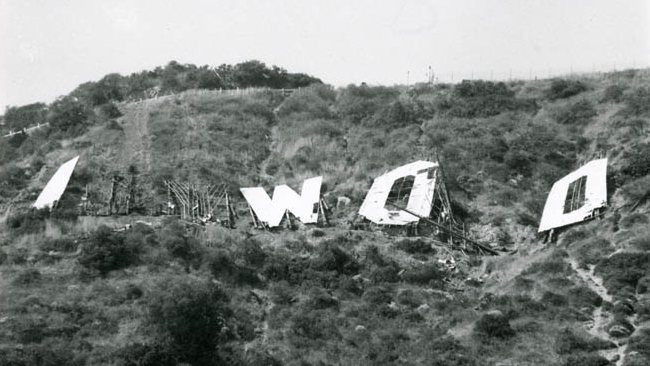
ENGLISH AUTHORS IN LOS ANGELES
Although Waugh referred to Charlie Chaplin and Walt Disney as “the two artists” of Hollywood, Waugh wasn’t the first, nor the greatest English talent to come to Los Angeles. High Lane-born Christopher Isherwood moved to the US earlier and was, along with WH Auden, caricatured by Waugh in his novel Put Out More Flags as Parsnip and Pimpernel — two poets who fled to California to avoid fighting in World War II. Isherwood became an American citizen in 1945 and pithily dismissed Los Angeles haters, stating “Either they understand it’s the only place or they don’t.”
Godalming-born Aldous Huxley was a close friend and occasional collaborator with Isherwood (and fellow Englishman/LSD experimenter, Gerald Heard). He moved to Los Angeles even earlier, in 1937, and initially found little to his liking. In 1940 he moved from the city proper to the Llano, in the Antelope Valley, very near Job Harriman’s utopian socialist Llano del Rio commune. In 1954, Huxley published The Doors of Perception about his experiments with mescaline which would prove influential to the psychedelic music scene (and inspire the name of Los Angeles rock band The Doors).
Reyner Banham Loves Los Angeles (1972)
Other noted English authors who’ve moved to Los Angeles includes Geoff Dyer, Geoff Nicholson (The Hollywood Dodo), Gerald Heard, Reyner Banham (Los Angeles The Architecture Of Four Ecologies), Richard Rayner (Los Angeles Without A Map), and Simon Reynolds (Rip It Up and Start Again, Retromania, Shock and Awe). England’s most famous author, William Shakespeare, never visited Los Angeles (in part because it didn’t exist during his lifetime), but his works are performed by Garden Grove’s Shakespeare Orange County professional theater group and the Atwater Village-based Independent Shakespeare Co.
ENGLISH MUSIC IN LOS ANGELES
“Going out to Llano. Going to look for Aldous Huxley. There between the power lines and the purple flowers of mescaline.”
— Frank Black and the Catholics “Llano del Rio”
Much American music has its roots in the British Isles. Many hillbilly songs were adapted from English ones (e.g. “The Knoxville Girl,” an adaptation of “The Oxford Girl”). In 1812 the British again warred with the US and even occupied and destroyed the White House. Amateur poet Francis Scott Key wrote a poem about a British attack, “Defence of Fort M’Henry.” Set to the tune of a British drinking song, “To Anacreon in Heaven,” became the US’s national anthem, “The Star-Spangled Banner,” in 1931.
Although rarely acknowledged, in the 1980s there were several influential English-born rappers including Monie Love, Slick Rick, Young MC, and Zev Love X of KMD (later MF Doom) who helped shape American hip-hop. Americans like Dana Dane, Rockwell, and more recently, Nicki Minaj, have all at various times adopted English accents — and where would New Orleans rap be without Derek B’s “Rock the Beat”? But none of that has much to do with the west coast, where Anglophilia has, with exceptions, generally been of a whiter shade of pale.
Before the British Invasion, the “California Sound” ruled the radio, exemplified by Los Angeles acts like The Beach Boys and Jan & Dean. It was by no means the only music coming out of Los Angeles, which was also a hub of soul, frat rock, surf music, and country. The sudden popularity of The Beatles, however, inspired hundreds if not thousands of Angeleno teenagers to form their own bands. The most obvious inspiration was the at-first-fictional band, The Monkees, whose singer Davy Jones was from Openshaw, Manchester.
The Byrds’ Jim McGuinn and Gene Clark originally performed as a Peter & Gordon or Chad & Jeremy-styled duo before adding members, rechristening themselves the suitably English “The Beefeaters” and releasing the Beatles-esque “Please Let Me Love You.” Even as the more American-sounding Byrds they echoed the 12-string jangle of The Searchers.
Many English-sounding Angeleno bands appeared in the 1960s including Boyce & Hart, Gary Lewis & the Playboys, The Merry-Go-Round, The Palace Guard, The Standells, and The Turtles. Even after the ‘60s, Los Angeles has continued to produce bands decidedly in debt to the British Invasion(s) including Allah-Las, The Arrogants, The Autumns, The Beat, Bikeride, Charming, The Day Beds, Dramarama, The Dream Syndicate, Further, Gliss, Grand Ronde, The Knack, The Nerves, Opal, The Plimsouls, Shadowland, Silent Gray, Smallstone, Sunstorm, Teen Heroes, The Three O’Clock, The Tyde, The Warlocks, and Zolar X. Although less-indebted to English music, Lily Marlene of Lily and the Ladies and The Grown-Ups was born in the UK.
RODNEY BINGENHEIMER
Rodney Bingenheimer isn’t English, although he played one on television (as a stand-in for Davy Jones on The Monkees). He’s also probably responsible more than any other Angeleno for nurturing Los Angeles’s musical anglophilia. Bingenheimer, born in Mountain View, California, named the glam rock club which he launched in 1972, Rodney Bingenheimer’s English Disco. The club was popular with the glam rock elite. Glam rock was a mostly English phenomenon and even American glam rockers like Brett Smiley, Iggy Pop, Jobriath, Lou Reed, and New York Dolls were all bigger in the UK than at home. Still, the Sunset Boulevard club did prove influential on the hair metal scene with which Los Angeles would become widely associated in the 1980s.
In the days of the English Disco, American radio was increasingly dominated by black artists like Billy Preston, The O’Jays, Marvin Gaye, Roberta Flack, and Stevie Wonder and at the same time, “disco” acquired a new connotation not represented at Bingenheimer’s club, which closed early 1975 — shortly after Iggy Pop, New York Dolls, and Silverhead played a Death of Glitter concert at the Hollywood Palladium. While the music Angeleno Anglophiles listened to may have been almost exclusively made by white English, the fans in largely Asian and Latino Los Angeles have notably always been quite diverse.
THE MAYFAIR MUSIC HALL
A more traditionally English venue was the Mayfair Music Hall. It was the creation of Pasadena-born entrepreneur Milt Larsen in July 1973. Larsen bought the old Santa Monica Opera House with the intention of turning it into a traditional Victorian music hall. Shockingly, the concept wasn’t terribly popular and Larsen added more crowd-pleasing entertainment like Vaudeville performances and silent film screenings. An acrobat and a dog act that took place there appeared in the pilot of the television series, The Rockford Files. It was also featured in the “Puttin’ On the Ritz” sequence of Young Frankenstein. It was damaged in the 1993 Northridge Earthquake and afterward the interior was gutted.
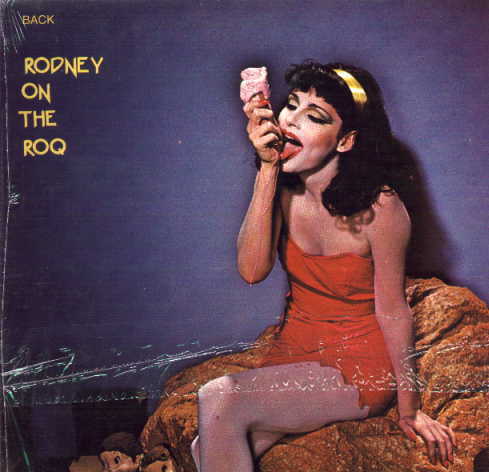

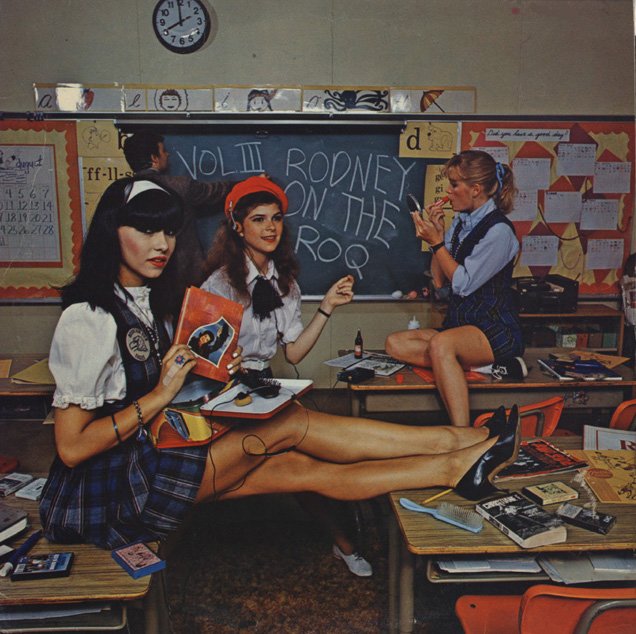
Bingenheimer resurfaced on KROQ, launching the influential Rodney on the ROQ in 1976. The program championed punk and new wave. The Anglophilia continued after The Jam released In the City in 1977 and Quadrophenia entered cinemas in 1979. Suddenly, the 1960s mod subculture was “revived” (something oddly antithetical to the subculture’s “never look back” ethos). Two-Tone, too, had a large following in Los Angeles.
An Anglo-oriented club, Club 321, opened in Santa Monica (of course) in 1983 — during the so-called Second British Invasion. It wasn’t exclusively British but it had mod-ska nights and visitors included the likes of Bananarama, Blancmange, Bow Wow Wow, The Culture Club, Levi Dexter, The Thompson Twins, &c. In Los Angeles style, the club attracted gangs — specifically Pozerz and Kingz of Drag — two prep/trendie gangs — which butted heads with Venice’s gangs. The club was cited for several violations, including underage drinking — and blamed for assaults, loitering, and public drunkenness. In 1985, 18-year-old Christian Jepson was killed with a shotgun blast from a car after a fight spilled out of the club and onto the streets. Santa Monica stepped and and shut the club down in 1986.
Coverage of the 1990 Depeche Mode Riots, a then “new” (ten years old) “progressive techno-pop” dance band
KROQ and in particular, Bingenheimer and fellow DJ Richard Blade (born Richard Sheppard in Torquay), were spotlighting and breaking American bands t00 but English bands like Depeche Mode (Blade’s favorite), Morrissey, The Cure, and Siouxsie & The Banshees could sell out massive venues and cause riots when they played in Los Angeles even whilst remaining virtual unknowns across most of the country
Morrissey Karaoke Thrives in Boyle Heights (Shannon Cottrell)
Morrissey, born in Davyhulme, moved to West Hollywood in the early 1990s. He was a regular fixture at the Cat & Fiddle. A local Smiths/Morrissey tribute band, Sweet & Tender Hooligans, has been led by Jose Maldonado since 1992. There are Morrissey karaoke nights on the mostly-Latino Eastside, including Sing Your Life! at The Office Club in Lincoln Heights and MorrisseyOKE™ at Eastside Luv Wine Bar Y Queso in Boyle Heights. Naturally, Morrissey’s popularity amongst Mexican-Americans has been the subject of several investigative pieces and documentaries and tributes like Is It Really So Strange?, My Life with Morrissey, Real Life with Morrissey, and Viva Morrissey!, For his part, Morrissey has responded by donning Chivas gear, penning “First in the Gang to Die” and when I once saw him live performing to an audience with three Anglos (one being me) in a T-shirt decorated with an Aztec calendar (and with El Vez! opening) he told the audience that he only knew one Spanish word, but that it was his favorite, “Mexico” (which happened to be the name of a new song).
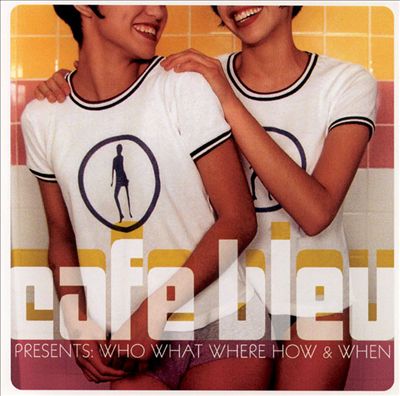
Long after the English Disco was shuttered, anglophile club nights returned with the rise of Britpop. Perhaps the first was Tita Ortega‘s Superstar, which was held at the now-closed British Dominion & Supper Club in Fullerton. In 1996, Piper Ferguson and Shalyce Benfell launched the legendary Cafe Bleu at the Checca Nite Club. The Checca was later renamed the Tempest Supper Club, which in 1999 also hosted a glam revival club, Flash — co-produced by Jason Lavitt and Bingenheimer.
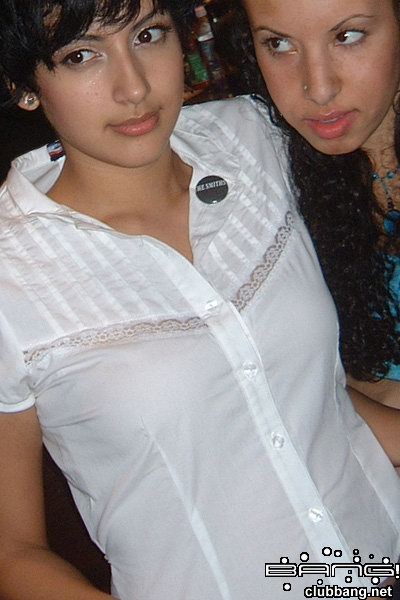
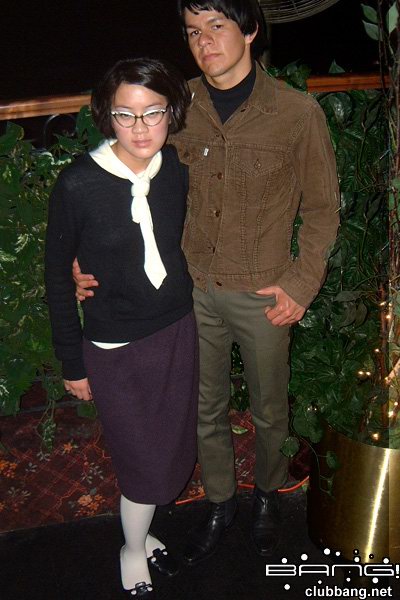
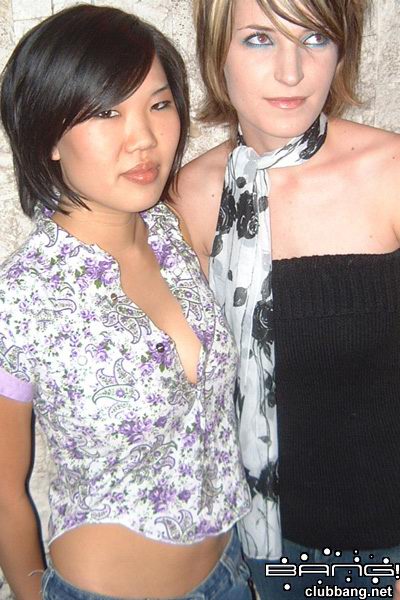

Multicultural Britpoppers at Bang! in 2001 — source: Club Bang!
Lavitt was involved in several Anglo-leaning Los Angeles club nights, including the ‘80s-driven Make-Up (launched with Joseph Brooks and Pat Briggs in 1999), the mod-oriented Shout! (also launched with Brooks in 1999) and Bang!, (also launched with Brooks, in 2000). It’s worth noting, I think, that by the turn of the century actual English people were more likely to be listening to the likes of A1, All Saints, Gabrielle, Sash!, or Westlife than they were to be dancing to Blur, Pulp, or Oasis and innovative English music such as UK Garage was (to my great disappointment) completely ignored by Britpoppers, for whom British music apparently peaked in 1995.

The longest-running Britpop club launched in 2001, about five years after the end of that era. Back then Angelenos Dia Becker, Eric Agrusa, Jason “Plucky” Anchondo, Lawrence Gjurgevich, and Mark Wright launched Underground at the Fais-Do-Do. It later moved east to the Tempest, continued down Sunset to The Echo, and finally landed at Chinatown’s Grand Star Jazz Club where Gjurgevich is joined by Diana Meehan of the pretty-English-sounding band The Sweater Girls.
ENGLISH-AMERICAN RADIO
Bingeneheimer is still on KROQ, albeit relegated to the 12am-3am on Monday morning slot. The station became part of corporate giant CBS in 1997 and his early morning slot is the only time listeners can expect to hear anything worth listening to.
After KROQ went mainstream, Indie 103.1 launched in 2003, playing the sort of music KROQ was formerly known for. Its best-known show was Jonesy’s Jukebox, hosted by Hammersmith-born Steve Jones from 2004 until 2009 when the station went off the air. UPDATE: Joney’s Jukebox now airs daily on KLOS from 12:00 – 14:00. Jones was, of course, the guitarist with The Sex Pistols from 1975-1978. Incidentally, former Sex Pistol singer (and driving force of Public Image Ltd.) John Lydon lives in Malibu and has done since the 1980s. Sex Pistols drummer Paul Cook also lives in Los Angeles and plays for Hollywood United FC, which Jones co-owns. More on them later.
There are other prominent English voices on the Los Angeles airwaves, as well. Birmingham-born Nic Harcourt hosts the KCSN Morning Show with Nic Harcourt and Bath-reared Frances Anderton hosts DnA: Design and Architecture on KCRW, a station based in Santa Monica.
LITTLE BRITAIN
Although there are larger percentages of English living in Rolling Hills, Palos Verdes Estates, Westlake Village, Topanga, Sierra Madre, Manhattan Beach, Malibu, and the Hollywood Hills, Santa Monica is sometimes referred to as “Little Britain.” Only 8% of Santa Monicans identify as English but its presence is long-established and high profile, reflected in the presence of an English market, an English restaurant, the offices of British Weekly, and a small but vital handful of English pubs. Although they’re all located in a reasonably small area of Santa Monica, Little Britain is more of a psychogeographic space than a physical location.
THE BRITISH ARE GOING! THE BRITISH ARE GOING!
Santa Monica began acquiring the reputation for being Little Britain at least as early as the 1950s, when, after World War II’s conclusion, many English in the aerospace and defense industry moved to the US where despite the war’s end military spending just continued to increase. As Santa Monica becomes less and less affordable for all but the wealthiest, its British population decreased dramatically. In 2000, there were 1,171 English living in Santa Monica. In 2011, when the US Census Bureau conducted the American Community Survey, that number had dropped to just 807. Thanks to businesses catering to English, however, the population remains highly visible.
ENGLISH PUBS
To me, the public house is a profoundly wonderful thing. However, having recently been to English pubs in England as well as those referred to as English pubs in the US I have noticed a few key differences. English pubs in Los Angeles are few and far between — rarely within stumbling distance. At pubs in Los Angeles there’s seemingly never a moment when music isn’t blasting — and in some cases drowned out by an even louder television blasting sports. Compared to our so-called Irish pubs, however, which are often akin to green-tinted Hooters, they’re still among the best places to enjoy some beer, relaxation, and conversation.
A word of warning; not every establishment with a pub-sounding name even remotely resembles a pub. They do serve alcohol at Hyperion Public and the Pig N Whistle but I doubt that any sober person has ever referred to either as anything other than a bar. Public House 1739 is a bit like a pub designed by frat boys who’d looked at pictures of pubs on Pinterest and surmised that they’d better choose a random olde timey year to add to their establishment’s name.
Recognizably pub-like are The Whale & Ale (San Pedro), Lucky Baldwin’s (Pasadena and Sierra Madre), The Fox & Hounds and The Kings Head II (both Studio City). I haven’t yet visited (and thus have no opinion on) The Lost Knight (Angeleno Heights — CLOSED), The Robin Hood (Sherman Oaks), the London Pub (Costa Mesa), the Underground Pub & Grill (Hermosa Beach), or The Olde Ship British Pub & Restaurant (with locations in both Fullerton and Santa Ana). Not especially pub-like, but definitely possessing an air of English-ness is The Village Idiot (Melrose), a wine bar with Old Speckled Hen on tap and football games on the television. UPDATE: A new, distinctly Cornish pub, The Stalking Horse, is scheduled to open at 10543 West Pico Boulevard (Rancho Park) in September 2017.
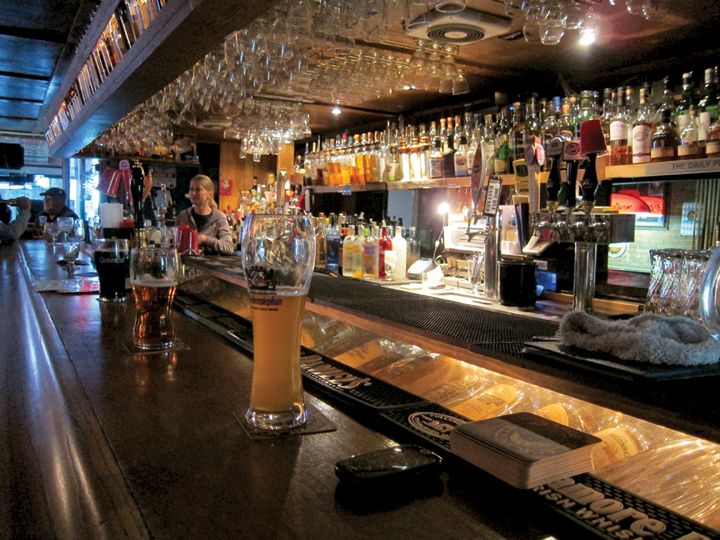
Santa Monica is pub central, home to Ye Olde King’s Head, the Britannia Pub, the Cock ‘n Bull, and the Daily Pint — only four and too spread out for a pub crawl. Josh Stephens’s “In L.A., thirsting for a decent bar culture,” makes several points, including that a lack of bar density often leads to increased drunk driving since bars aren’t within walking distance. It should probably be figured into the website Walkscore or someone should launch Barscore. When the Expo Line is completed, getting to and from the Westside’s pubs will become that much easier but it’s still worth remembering that a trip to the restroom should be taken before a long transit ride.
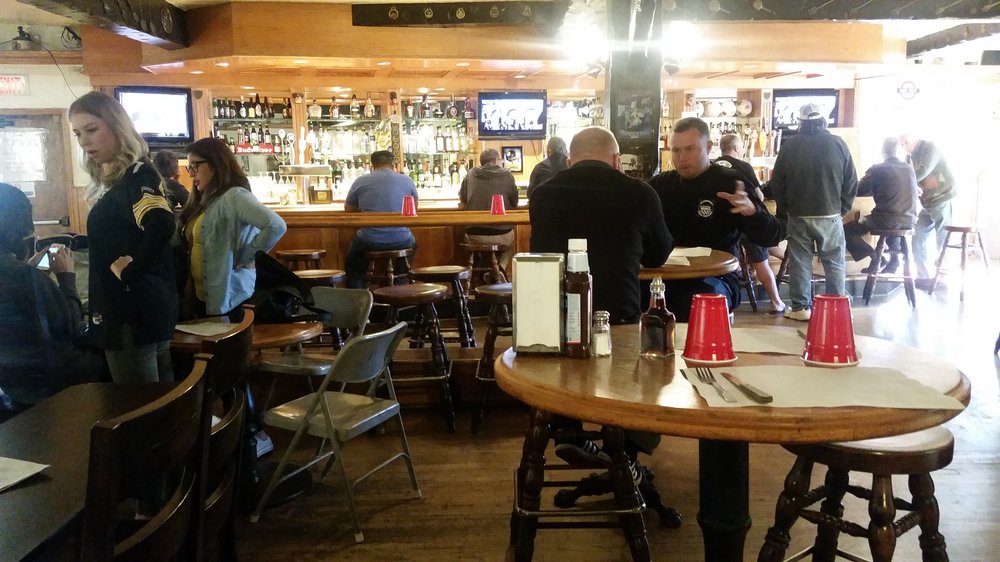
Christopher Hutt‘s book, The Death of the English Pub, was published in 1973 and the English public house has repeatedly been pronounced dead in the intervening four decades. It’s hard to reconcile, for me, because in the UK it seems like there’s a pub on every corner whereas in Los Angeles County there are whole communities where all drinking is done in private or parking lot. When the Cat & Fiddle closed (and is currently in the process of relocating), it felt like a bigger blow than it would’ve been were there more like it on the pubscape. UPDATE: The Cat & Fiddle has re-opened at 742 North Highland Avenue.

The Britannia is alright (a bit too much of a sports bar for me) but the King’s Head is my go-to pub on the Westside. One of Los Angeles’s biggest failings is its lack of bar density and the last time I went to the King’s Head I walked twelve kilometers (or eight British Imperial Miles) to do so. After thirstily tossing back a pint of Tetley’s, I surveyed the bar.
ENGLISH CUISINE IN LOS ANGELES
I’m not sure to what all of those tired, old jokes about English food can be attributed. Everywhere I ate in England was fantastic. The jokes seem to date from the stone age — or at least before the invention of refrigeration or the discovery of Indian food. Anyway, should Americans really throw stones in a glass kitchen stocked with processed plastic marketed as “American cheese,” bucket meals, beverages that double as car battery corrosion solvents, chocolate bars that taste like vomit, and macrobrews which taste like Comet? Our ancestors rightfully regarded skim milk as industrial waste but now plenty of Americans think it’s a suitable breakfast item when poured over sugary corn junk. It’s not really in the same ballpark as a full English.

Although all of our pubs serve food, the only proper English stand-alone restaurant that I’m aware of is The Pikey, the head chef at which is East Dulwich-born Ralph Johnson (UPDATE: Closed in 2020). There’s also an English food truck, Cod Save the Queen. There’s a restaurant, Union Jack Fish & Chips, with locations in Costa Mesa and Fountain Valley.
The English fish and chips chain, H. Salt Esq., launched in 1965 by as Salt’s Fish & Chips by Haddon Salt. Salt had originally sold fish and chips in Skegness and opened his first American restaurant in Sausalito. In the 1970s it was at its most popular but even today there are local franchises in Anaheim, Beverly Grove, Gardena, Koreatown, Lake Balboa, North Hollywood, San Fernando, Sawtelle, Temple City, and Westminster.

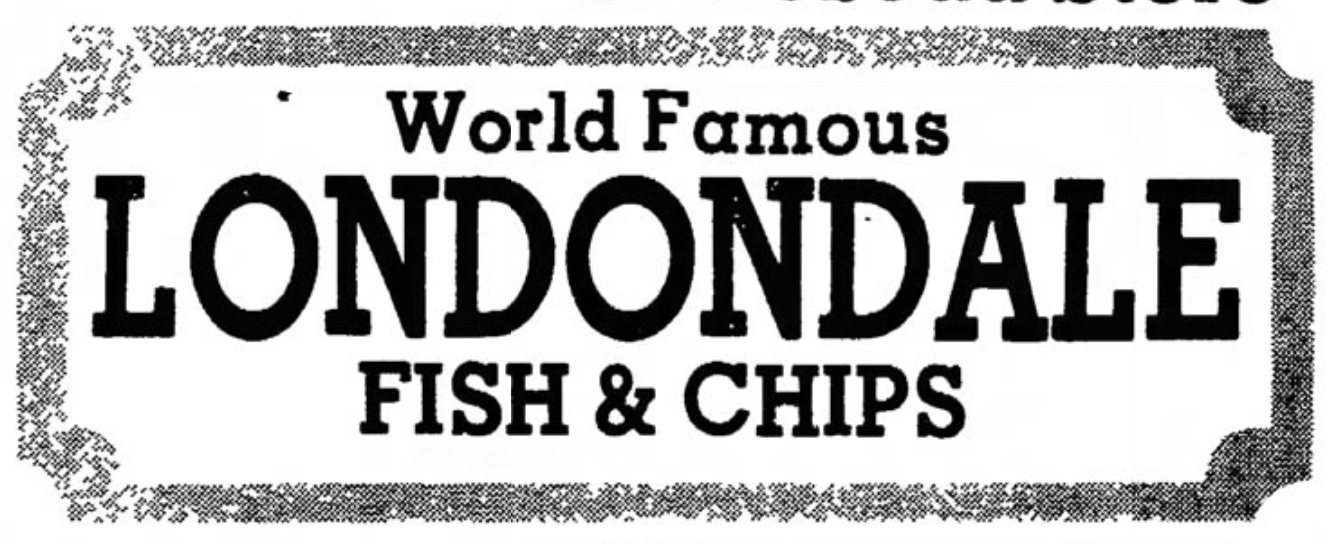
Golden Enterprises founded the fish and chips restaurant, Londondale Fish & Chips, around 1974. The first location was in Reseda. By 1977, it was a chain with 22 locations — although, by then, Golden Enterprises only directly managed two. Despite the name and the mascot — a Queen’s Guard in a bearskin hat — its commitment to authenticity may have been lacking. From the beginning, the chain boasted of broiling its Icelandic cod in Virginia peanut oil. In Liu Bing‘s 2000 book, 我的出版印刷半世紀, the author mentions that fried fish was very popular with Chinese people in the 1970s and that they briefly operated a Londondale location. By 1985, it seems as though some of the franchises had abandoned even pretenses to Englishness. In that year, the Glendale location advertised its all-you-can-eat buffet with British staples like egg rolls, seafood fried noodles, sesame fried chicken, and tempura fried rice. There were still locations open at least as late as 1991 — and a Westside diner had “Londondale Fish & Chips” on its menu, suggesting perhaps that the chain had transformed into a line of food. The Redondo Beach location was closed in 1993 for a lack of potable or hot water. The most recent mention that I could find was from a 1994 shopping center directory.
There seems to have been a real craze for fish ‘n’ chips in the 1960s and ’70s. In addition to H. Salt Esq. Fish & Chips and Londondale Fish & Chips, there were other fish ‘n’ chip chains including Big Ben Fish & Chips, H.M.S. Briny, London Bridge Fish & Chips, Mr. Fish & Chips, Moby Dick’s Fish & Chips, and Union Jack Fish & Chips — all of which boasted multiple locations in their mid/late-20th century heydays and all of which seem to be all but forgotten today.
FORMERLY ENGLISH, FORMERLY EXTANT

There are, of course, many English-themes institutions that have come and in many cases gone. The Prince opened in the 1920s as The Windsor and still retains a British decor even though the mostly Korean clientele will find soju on the menu, not stout. Nearby, the HMS Bounty (which opened in 1948 as The Gay Room) retains an English vibe; it’s dark, named after a ship in the Royal Navy, and there are British decorations. Both are located, not coincidentally, near the former site of the Ambassador Hotel, in operation from 1921-1989 and demolished in 2005.

THE RED LION
The Red Lion in Silver Lake began existence in 1959 as an English pub before transforming into a faux-Bavarian gasthaus in 1963. In fact, the “Red Lion” is by far the most popular pub name in the UK. The Red Lion Tavern was opened by Ted Mandekic and Edward Pagliano, who also owned Cole’s at that time. While the biergarten and middle room are appropriately Germanic, the original section, downstairs, still retains an air of Englishness. Gone but not forgotten are Royal Claytons (UPDATE: re-opened as Claytons Public House in the Historic Core), The British & Dominion Social Club, and the Tudor House.
THE FOX & HOUND
The first English restaurant in Los Angeles may’ve been the Fox and Hound. It opened in Santa Monica in late June 1947, under the supervision of Harold Gelber. It was designed by architect Arthur Froehlich to be an exact replica of “a famous English Tavern.” It was open, at least, until 1979 — but apparently closed by 1980.
YE MUCKY DUCK & CHIP INN
Ye Mucky Duck & Chip Inn opened in 1961 or ’62. It was owned by Scotsman, Brian Cameron, and his wife, Nita, but touted its “olde English fish & chips.” It was billed as “the ORIGINAL Californian English Pub” although it was clearly pre-dated by the Fox & Hound. It was still one of the first English pubs in the US. After the British Invasion kicked off in 1964, New York City followed Los Angeles’s lead and Time Magazine reported, in 1966, that “two dozen pubs have opened in Manhattan, bearing names redolent of instant nostalgia, like Molly Mog’s and the Jolly Six Pence.” The article also noted five in Atlanta as well as others in Chicago, St. Louis, Washington, and San Francisco. By then, Cameron had opened another English-style venue — the Saucy Swan in Costa Mesa. It included a half-acre green for horseshoes and lawn bowling. By 1970, Ye Mucky Duck was operated by Englishmen Van McDuff and Wally Parsons. Around 1975, Ye Mucky Duck had to move as its original location on Wilshire Boulevard was scheduled for demolition in order to make way for new construction. It next door to another English pub, George Mear’s Coach ’N Orses, on Main Street. It seems to have closed shortly after. Around 1979, an English pub opened on Ocean Avenue, called Ye Olde Mucky Duck. I’m not sure what, if any, connection it had to the former Mucky Duck — aside from its name and being an English Pub. Around 1985, it began to be referred to simply as Mucky Duck. It closed around 1988.
ENGLISH MARKETS

Santa Monica also has at least one mostly-English market, the Continental Shop. Its exotic groceries include Maltesers, cans of Heinz beans, brown sauce, and a huge rental library of British series and films on video and audio cassette. The shop is owned by Australians and there are thus also Australian delicacies like the leftover brewers’ yeast extract marketed and sold as a food spread. UPDATE — The Continental Shop has closed!
Other English grocers in the Southland include The British Grocer (Fullerton) and British Connection (Torrance). Ye Olde King’s Head’s has a small gift “shoppe” too — and actually, most of the Indian markets that I know of have at least an aisle stocked with English goods.
ENGLISH TEA
On the subject of formal tea, I don’t know much. I’ve never had a low tea service but it seems that many Americans think all English are tea connoisseurs who break out the doilies, scones, thin sandwiches, macaroons, macarons, and light music every time they drink tea from a porcelain cup and saucer. Although my firsthand experience is hardly scientific, most English I’ve seen are content to drink dusty bags of low-quality Tetley or PG Tip scalded by water heated in a scaly, electric kettle. The result tastes a bit like I imagine pencil shavings in hot cream would.

Traditionally tea has not been cultivated in the UK. In fact, the only tea plantation is maintained by Tregothnan, a tea company founded in 2005.
Tea was first cultivated and consumed in South Asia and is most popular in Morocco and Turkey. In Los Angeles, the biggest consumers of tea seem to be young people who prefer Taiwanese boba to Earl Grey and there are tea houses packed with card players and students in the San Gabriel Valley and North Orange County. Anglophiles, however, seem to want their tea parties to resemble the sort that young girls throw for their stuffed animals and dolls. The only businesses that I know of that serve formal, low tea are the Rose Tea Cottage (Pasadena) and The Rose Garden Tea Room at The Huntington (San Marino). In Newport Beach, there was The Tea Room, but it closed in 2013.
ENGLISH SHOPPING
There are, of course, shops that specialize in the kinds of English products not found at grocers or gift shops. It’s not at all uncommon to see Aston Martins, Bentleys, Jaguars, and Land Rovers idling in Los Angeles gridlock. Without having paid too much attention to their license plate frames, I assume that the majority are sold by local car dealers (although I’m not sure why any city dweller would want one). Los Angeles is the second largest city in the US, has the second largest public transit system, and the second highest ridership. Besides, the bus, train, and rapid transit were all invented in England whereas the car is German. There is the Southern California MG Club, which was established in 1978, and meets regularly at Mutt Lynch’s in Newport Beach. Naturally, there are automobile repair shops that specialize in British makes including British European Repair, Chris’s British Car Service, and Darrin’s MG Service.

English clothing brands commonly sold in Los Angeles include Barbour, Burberry, Dr. Martens, Duncan Quinn, French Connection, Paul Smith, Reebok, Reiss, and Ted Baker. The Melrose store Posers carries more subculturally-specific brands like Ben Sherman, Fred Perry, Lonsdale, and Merc. There’s also a Ben Sherman store in Beverly Grove‘s Beverly Center and the Philadelphia-founded Urban Outfitters carries a selection of Fred Perry.
THE LONDON SHOP
The London Shop was a small chain of British menswear shops about which I can find little information — in large part because of its distinctly generic name. Bernal Hubert Dyas opened a sporting goods store, with partner George T. Cline, called Dyas & Cline in 1905. It manufactured jodhpurs with a label, the London Shop. The shop was located at 7th and Hill. Dyas Co. closed in 1933 and I don’t think was related to later stores with that name.
Ohio-born Henry Howard Lipsey moved to Los Angeles around 1903, when he was about 28 years old. By 1930, he was the proprietor of a store at 10th and Hill called The London Shop Inc. Ltd. By 1945, there were locations of menswear stores called The London Shop in Hollywood’s Roosevelt Hotel and on Beverly Hills’ Rodeo Drive. Their motto was “ye shoppe for men.” I am assuming that these were connected to Lipsey, who died in 1965. In the 1960s and ‘70s, the London Shop frequently advertised Church’s English Shoes. In filmed footage from the 1970s, the Beverly Hills location prominently features Aquascutum — a brand beloved by Royals and Casuals — that was bought by a Japanese company in 1990 and is now Chinese owned.
By 1974, the London Shop opened a location in South Coast Plaza. The Beverly Hills and Hollywood locations were still open at least as late as 1978 but the latter, at least, seems to have closed around then. The Costa Mesa location advertised their “final” Christmas sale in 1988. The former site of the Beverly Hills location was demolished and replaced, in 2014, with a building that is currently home to a Burberry — a brand beloved by Royals and Chavs. Burberry, like Aquascutum, was formerly “made in Britain.” Since 2006, its products have been made in China.
ENGLISH-AMERICAN TELEVISION
“The Big Two… Britain and America… um, sorry rest-of-the-world!”
— Ricky Gervais, taken out of context
Unlike Hollywood cinema, which has always been closely tied to British cinema, American and British television have largely operated along separate lines. There are few British-American co-productions such as Extras (co-produced by BBC and HBO), Derek (produced for Channel 4 but somehow a “Netflix original”) — both of which star Ricky Gervais. His former creative partner, Stephen Merchant, starred in HBO’s Hello Ladies, about an Englishman’s search for love in a Los Angeles. I liked the series although the Los Angeles it depicted was to me almost completely unrecognizable.
Angela Lansbury was born in Regent’s Park, London to an Irish actress and English politician. In 1940 she moved to New York City. After living there for two years she relocated to Los Angeles and began acting in MGM films. In the 1960s her daughter Deirdre developed an unfortunate association with the Manson Family and later opened a restaurant, Ristorante Positano, in Westwood (it closed in 2005). Lansbury’s son Anthony became a television director, helming 68 episodes of Murder, She Wrote, a long-running series that starred Lansbury as best-selling English mystery author and amateur sleuth. Although set in Maine, it was mostly filmed in and around Los Angeles (primarily at Universal Studios).
Patrick Stewart was born Mirfield, West Yorkshire in 1940. He’s most widely known for playing the French Captain Jean-Luc Picard on Star Trek: The Next Generation and its successor films — and to fans of superhero cartoons as Professor Charles Xavier. He’s also a respected stage actor with the Royal Shakespeare Company. He’s currently starring on upcoming Starz sitcom, Blunt Talk, in which he portrays an English newscaster named Walter Blunt who moves to Los Angeles.
The Sky series, Doll & Em, co-stars London-born actresses Emily Mortimer and Dolly Wells as two English friends working in Hollywood. Em is starring in a film shot in Los Angeles and Doll is her best friend and personal assistant.
Los Angeles station KCET and Globe Trekker co-produced a series called Global LA, which featured an episode called “British in Southern California.”
More than HBO or BBC America, PBS (or more specifically, its affiliates) have done more to bring English television in its original form to American audiences. Beginning with WGBH’s airing of The Forsyte Saga in 1967, PBS affiliates began purchasing British shows and rebroadcasting them in the US. The US’s longest-running weekly prime-time drama series, Masterpiece Theatre, debuted on PBS in 1971 and its episodes are all BBC, Channel 4, and ITV productions. In 1980 it spawned another, similar series, Mystery!
In 1974, KERA in Dallas was the first American station to broadcast Monty Python’s Flying Circus and many PBS affiliates soon followed suit. In 1977, Fawlty Towers became the UK’s best-selling overseas program. Doctor Who was also discovered by America in the late 1970s, although episodes of the originally serialized show were typically shown over the course of several hours.
Mike Frisbie introducing a Doctor Who series for IPTV
Other American television networks apparently doubt that their advertisers would go for English rebroadcasts and they’re remade and inflated from a dozen episodes to hundreds. American series including All in the Family, American Idol, Big Brother, Cash Cab, Cracker, Coupling, Dancing With the Stars, Dear John, Hell’s Kitchen, House of Cards, Kitchen Nightmares, Men Behaving Badly, The Office, Prime Suspect, Queer as Folk, Sanford & Sons, Spaced, Three’s Company, X Factor, Who Wants to Be a Millionaire?, Weakest Link, and many others were all adapted from English series.
The BBC series Stephen Fry in America and Top Gear have filmed in the US and The Equalizer starred Croydon-born Edward Woodward as a classy vigilante but was filmed in New York — as is John Oliver‘s Last Week Tonight. More often than not, British actors appear playing Americans: Alex O’Loughlin (Hawaii Five-0), Andrew Lincoln (The Walking Dead), Idris Elba (The Wire), Mischa Barton (The OC), and Hugh Laurie (House) all feature English playing Americans.
ENGLISH ARCHITECTURE & ENGLISH-AMERICAN ARCHITECTS (INCLUDING LANDSCAPE)
As the first industrialized country in the world, the UK has long pioneered both urban and suburban development and architecture. In the 19th century, some English factory owners built residences for their workers which inspired public housing and at the same time, the middle classes relocated to the outskirts. The
Old Nichol, built in London in the 1880s, is often considered the first public housing project. Recently Mayor Eric Garcetti announced the Homes For Heroes Initiative For Homeless Vets, which borrows a phrase from the UK’s patriotic attempts to provide homes for those in need of assistance. In Los Angeles, the last public housing projects were built in 1955 because Republicans successfully convinced voters that providing housing war veterans and the poor was unpardonably un-American.
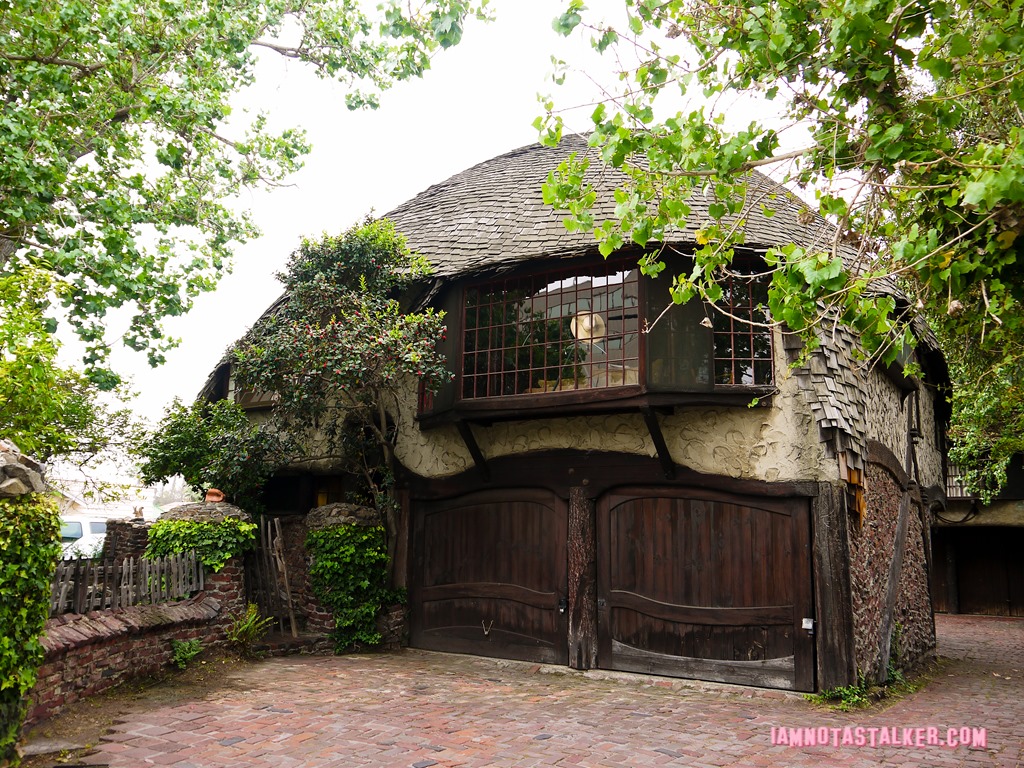
Kitschy English architectural aspirations are evident in both houses and housing developments such as Janes Village in Altadena, Lawrence and Martha Joseph Residence and Apartments in Palms, the Spadena House in Beverly Hills, and the Snow White Cottages in Los Feliz. Also, shout out to Toad Hall in Mr. Toad’s Wild Ride, which since part of Disneyland isn’t actually a residence but the design of which was reputedly inspired by either Fawley Court, Hardwick House, or Mapledurham House — all country houses in the Thames Valley.
LONDON TOWNE CENTER
A mock Tudor pod mall was constructed at 910 Torrance Boulevard in Redondo Beach in 1940. I’m not sure whether or not it was always called London Town Center — but it has been for a long time. Around 1989, London Town Flowers opened there, promising “high styling with that classic European touch.” By 1992, an “e” had been added to “Town” and the business was known as London Towne Flowers & Gifts. It was open at least as late as 1997. The pod mall, however, is still called London Towne — even though its current tenants — a psychic, an optometrist, a holistic healer, and a vape shop — don’t have any obvious connection to the British capital.
Many communities in Los Angeles and Orange County have strangely English names. There’s Canterbury Knolls, Chesterfield Square, Hyde Park, Ivanhoe, Oxford Square, Sherwood Forest, Westminster, and Windsor Square, to name a few. Sometimes the English affectation barely extends beyond a community’s name, perhaps to Victorian=looking lamp posts and maybe a mock Tudor strip mall.
MARY’S GATE VILLAGE
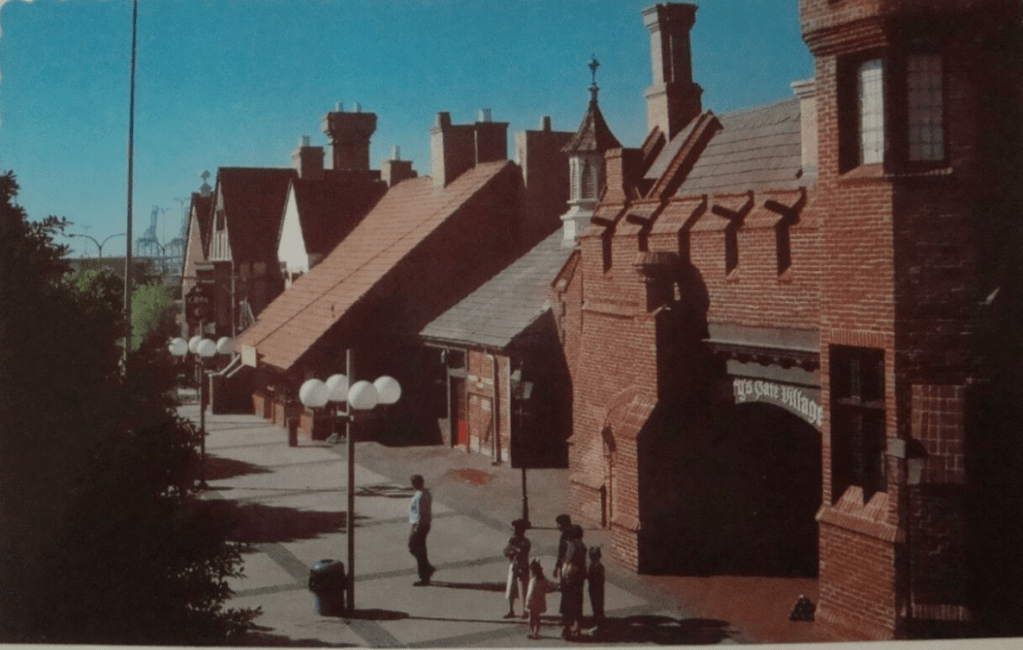
Rather more charming was the faux-English Mary’s Gate Village. Construction of that old English-themed shopping complex began in 1972. It was built by developer William Evans and Specialty Restaurants Corporation of Long Beach in order to cash-in on the newly arrived HMS Queen Mary. It was designed by Vernon G. Leckman, who’d previously designed the New England-themed Ports O’ Call Village in San Pedro. His buildings were meant to evoke Edwardian, Elizabethan, and Tudor England. There was a 20-meter tall clock tower. In June, whilst under construction, it was damaged by an arsonist.
When Mary’s Gate Village finally opened in April 1974, only about six of the complex’s 49 retail shops had tenants. There was Aunt Diana’s Old-Fashioned Fudge, Thee Knot Shoppe, the Leather Factory, the Royal Indian Shop, Ye Olde Mouse House (the first tenant), and William Roberts Jewelers. They were soon joined by Spice & Such and the Stratfordshire Gift House. There was a grand opening in June. In December, the Ha’Penny Players sang carols and Punch & Judy shows became a tradition the following year. Spring saw the village host the International City Festival and summer brought the Queen Mary Festival of the Arts. Autumn introduced an annual Halloween party. By the end of the year, though, only fourteen of the 49 storefronts had tenants.
Later tenants included International Fairs, Lady Hamilton Restaurant, Lord Nelson’s Restaurant, Qno’s Pub, Queen’s Carriage, Ruggles, Sir Winston Churchill’s Restaurant, and Wilberforce Tea House. Merchants were represented by the Mary’s Gate Merchants Association. At its peak, there were only 22 tenants — meaning it was never more than 50% full. By February 1976, there were only eight tenants left. By June 1977, that number had dropped to seven. The $1 parking lot fee was blamed and dropped on 30 June. By October, there were eighteen tenants.
In 1978, Al Williams opened Long Beach’s only jazz club at the village — Jazz Safari. When the Spruce Goose arrived next door, in 1981, the shopping center began to rebound a bit. Around that time, it was renamed Londontowne Village, and taken over by the Beverly Hills-based Wrather Port Properties, Ltd., who had big plans — like building a ten-story, 350-room hotel, a 30,000 square foot exhibition hall… and not renewing Jazz Safari’s lease. It closed in 1986. Some of the shops were demolished in favor of more car storage. The hotel and exhibition hall never materialized.
In 1992, the newly-formed Queen Mary Complex Inc. took over operation of the ship and shopping center. The company’s Joseph F. Prevratil announced a plan to revive the area by adding carnival rides. Londontowne Village seems to have quietly closed instead. Around 1996, it was incorporated into the Londontowne of Terror & Haunted Hull of Horror but it has sat abandoned, for the most part, for decades, surrounded by forty acres of parking lot — most of the spaces of which are usually empty.
One of Los Angeles’s most important architects was English-American John B. Parkinson,

born in Scorton in 1861. He moved to Los Angeles in 1894 and had a hand in the design of a good deal of the Beaux Arts high rises of Old Downtown‘s Historic Core such as the A.G. Bartlett Building, Braly Block, and Hotel Alexandria. He also designed (or had a hand in the design of) Bullocks Wilshire, the California Bank Building, Los Angeles Memorial Coliseum, Los Angeles City Hall, Title Guarantee and Trust Company Building, Zumberge Hall of Science, and my favorite, Union Statio
Walter Hammond Sadler was born in London in 1886 and graduated from the University
of Reading. In 1913 he moved to the US and joined the noted landscape architecture firm,
Olmsted Brothers. He built a home in Los Angeles for his family at 2737 Via Anita, Palos Verdes Estates; a whites-only, master-planned community for which the Olmstead Brothers were directors of design and Myron Hunt the chief architect. Sadler also worked on the

landscape of Long Beach‘s Bixby Estate (Rancho Los Alamitos) and the grounds of the Washington State Capitol. He became a US citizen in 1925. In 1934, Sadler opened his own firm in Westwood and went on to design the landscapes of many mansions in Bel Air, Beverly Hills, and Pasadena. During the Great Depression, Sadler showed a growing interest in multi-family residences and in 1939 he collaborated on the city’s first garden apartment complex, Wyvernwood in working-class Boyle Heights. After the publicly-funded Wyvernwood, Sadler turned his attention to public housing, designing the landscapes of Estrada Courts in Boyle Heights, Rose Hill Courts in Rose Hill, and the redeveloped Jordan Downs in Watts. One of his last major works was the Roosevelt Naval Station on Terminal Island. In 1947, Sadler designed a small memorial park to honor three Palos Verdes veterans who lost their lives in World War II, one of which was his son. He died of cancer on 29 March 1958.
Modernist architect Rex Lotery was born outside London on 19 August 1930, to Edward and Gwenyth Lotery. The Lotery family moved to Manhattan in 1939, and later to Scarsdale. Rex Lotery received his Bachelor of Architecture from Rensselaer Polytechnic Institute and afterward moved to Los Angele where, in 1953, he married Susan Schacker, who bore three children; Kent, Richard, and Gwen. From 1969-1984 Lotery was a partner at the firm of Kahn, Kappe, Lotery, Boccato. Some of his most notable projects include the Central Business District Master Plan in Inglewood, the Charmlee Regional Park Master Plan, the Downtown Urban Improvement Program in Santa Ana, the Spanner Residence in Woodland Hills, and the home of Elvis Presley (and others) in Trousdale Estates. In 1973 he served as president of the Southern California Chapter of the American Institute of Architects. In 1978, Susan died, followed a few months later by their son, Richard, in a car collision. Lotery remarried Fran Geisler and she gave birth to a son, Kevin, in 1982. From 1984-1992, Lotery served as President of Urban Innovations Group at UCLA. He died on 31 January 2007. He died 31 January 2007.
ENGLISH LANDSCAPE
Unfortunately, the influence of the English culture on the Southern California landscape has not been entirely positive. If anyone is to blame for the dumb grass lawns ubiquitous even in semi-arid and desert cities, it’s the English upper classes. Although grass lawns and rose gardens might do reasonably well in the UK without much maintenance, the effort to impose them on our semi-arid Chaparral has certainly not helped the situation with our droughts. Maintaining these stupid patches of grass has become such an embedded part of the American psyche that I’ve heard people dismiss drought-tolerant, native yards as ugly. The picture below is of one of those “ugly” yards and two houses down, when I took this picture, I saw a man apparently compelled by muscle memory to water his stupid grass lawn… even though it was raining.
The grass lawn is an “innovation” designed to flaunt the wealth of their owners and show off the fact that they don’t have to grow food on their estates. By this twisted, toff logic, a food-producing garden is something of which to ashamed (and therefore planted, when necessary, in the backyard where one might find the even more shameful clothesline). Plant something on a road verge or let your lawn go native and you may risk the ire of your local fascist homeowner associations.
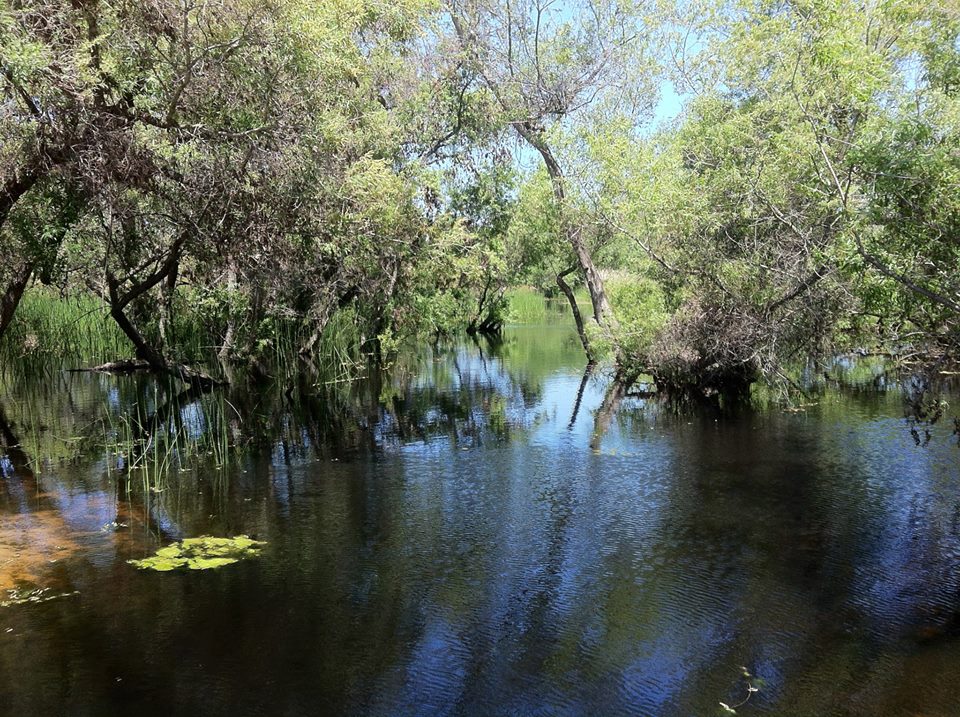
I sympathize with transplants from temperate climates who wrongly think that Los Angeles is a desert without seasons. It does have seasons, of course, as does every corner of the planet although they don’t look like those in England or the Middle West. Neither is the fact that it’s not a drizzle-soaked bog mean that it’s a desert (except when it is — there are many natural wetlands in Los Angeles). Learning to read the seasons of unfamiliar climate can actually be quite rewarding.
In Hugh Laurie’s mostly-excellent piece, Hugh Laurie’s Los Angeles, the English actor claims that without water Los Angeles would resemble the surface of Mars. Turn off the water here (please) and Southern California will no more resemble Mars than would Australia, South Africa, or the Mediterranean — — or to name a place most Britons are familiar with — Ibiza. We’re currently experiencing the worst drought the region has experienced in 1,200 years and the myth that Los Angeles is an artificial oasis in the desert kept alive only by lawn watering is crap. Turn off your hoses and sprinklers, I implore you.
Not all English subscribe to the myth that Los Angeles is a desert. Lila Higgins, Special Projects Assistant at the Natural History Museum of Los Angeles, knows this. Facing off against the large Exposition Park Rose Garden (itself pretty English and established in 1928) are the history museum’s new-ish Nature Gardens, teeming with life and created in a space formerly occupied by a parking lot. A visit will hopefully make clear for all but the most deluded that Los Angeles’s diversity isn’t limited to humankind and that the native landscape little resembled that of the lifeless red planet.
DAVID HOCKNEY
One Englishman who seems to like Southern California the way it is — especially its private pools — is David Hockney. The Bradford-born Pop Artist was inspired by the residences of Los Angeles to paint a famous series of acrylics. I believe that my brother had a poster of one of his pieces in our bedroom when we were kids (I went with Jacob Lawrence). He first moved to Los Angeles in 1964 and remained until 1968 before returning to Los Angeles in 1978 at which point he purchased residences both in Nichols Canyon and Malibu (although he’s since sold the latter).
ENGLISH LODGING
There are a few lodging houses in Los Angeles that aspire to create a sense of Englishness or, in the case of a converted ocean liner, are actually from England. The RMS Queen Mary is a Long Beach hotel converted from a retired British ship that sailed the North Atlantic from 1936-1967 (but was built not in Clydebank, Scotland). Yes, she was built not in England but in Clydebank, Scotland — but her port of registry was Liverpool.
Once upon a time — around 1964 — Tom Stansbury opened the Tudor Inn. According to the back of the postcard, pictured above, it featured “Excellent dining, cocktail lounge/entertainment & 24 hour coffee shop. English architecture, air conditioned, TV, background music, direct dial phones, heated pool, attractive rooms all with interior patio overlooking pool area.” Just look at it and appreciate the extreme Englishness of the scene.
The London West Hollywood is home to an English bulldog but English guests will no doubt be confounded by shower doors that stretch all the way around the bath as well as combined hot and cold faucets. The Palihouse, with locations in West Hollywood and Santa Monica, apparently caters to English visitors — although I’m not exactly sure how beyond featuring decorative Union Jack throw pillows. Over in Orange County, there are fake English hotels and motels near Disneyland including the Anaheim Camelot Inn & Suites and the not-so-highly regarded Robin Hood Motel.
ENGLISH EVENTS AND ORGANIZATIONS
There are at least three British social organizations in Los Angeles: The British United Services Club, Soho House, and Brits in LA.
The British United Services Club was established in 1935 by a group of British officers and consular members. Founding members included actors Alan Mowbray, C. Aubrey Smith, and Gene Lockhart. The club began admitting women 53 years after its founding. They originally met at the Masquers Club in Hollywood. In 1988, they moved to the Verdugo Club in Glendale. After the Verdugo Club closed in 1994, they moved to the Altadena Town and Country Club.
According to the website of local Soho House, in West Hollywood, “Unlike other club concepts, which often focus on wealth and status, we aim to assemble communities of members that have something in common: namely, a creative soul.” Creative souls can become members for the low price (depending on the desired level of membership) of $1000 to $2800 (plus a $300 registration fee and 9% sales tax).
Brits in LA, as far as I can tell, is free but does require one to apply for membership to their Facebook group and there is a “code of conduct.” They organize a weekly breakfast club, Sunday luncheons, day trips, and have a football team, Blaggers United FC.
The annual BritWeek was launched by Wirral-born Nigel Lythgoe in 2007. Christian Smith and Englishwoman Rosie Woodward Smith’s “street museum project,” Walking LA, is related to the particularly English tradition of rambling. The offices of the British Consulate-General are located in Century City.
ENGLISH-AMERICAN SPORTS
Although colloquially known as “America’s pastime,” (or alternately, “America’s nap time’) baseball has its origins in the Tudor era ball-and-bat game, rounders. So, too, did cricket, which although popular in many parts of the world retains its strong associations with England. Cricket teams formed in Los Angeles, Santa Monica, and Riverside in the late 19th and early 20th centuries and Pasadena and Hollywood formed cricket clubs in the 1930s. Today the sport is represented locally by the Corinthian Cricket Club and the Compton Cricket Club (who formed as the Los Angeles Krickets in 1995). Los Angeles’s Leo Magnus Cricket Complex is located in the San Fernando Valley, and is utilized by the teams of the Southern California Cricket Association. Orange County is home to the Orange County Cricket Association.
Perhaps even more associated with England is the game of soccer — or “association football.” A group of American and Canadian entrepreneurs, led by Jack Kent Cook, planned to form the United Soccer Association (USA) and readied for launch in 1968. A rival league, the National Professional Soccer League (NPSL) announced, however, that it was prepared to launch in 1967. The USA responded by fast-tracking the launch of their league. They didn’t have any players, though, and so imported entire teams from Europe and South America. Los Angeles imported the Wolverhampton Wanderers FC squad — fresh off promotion to the First Division in the UK. Cook wanted to call them the Los Angeles Zorros — but Wolverhampton kept their English nickname, “the Wolves.” 17,824 attended the championship play-off at the Los Angeles Coliseum against the Washington Whips (Aberdeen). The Wolves won 6-5. In December 1967, the USA and NPSL merged to form the North American Soccer League. For this season, they were represented not by Wolverhampton. They finished third in the Western Division and folded 1968, after just one season.
Los Angeles is currently home to one professional football club, Los Angeles Galaxy, which has employed several Englishmen including David Beckham, Kyle Patterson, and Steven Gerrard. From 2004 till 2014 their crosstown rivals were Club Deportivo Chivas USA, who employed John Cunliffe and Ryan Smith. In 2018, the Los Angeles Football Club is set to become Galaxy’s crosstown rival.
Meanwhile, Hollywood United FC plays in the United States Adult Soccer Association. The team was founded in 1988 by English immigrants who frequented the Cat & Fiddle, including the aforementioned Paul Cook and Steve Jones (The Sex Pistols, Billy Duffy and Ian Astbury (Southern Death Cult, Death Cult, and The Cult), and Vivian Campbell (Def Leppard). The team has since counted amongst its ranks the likes of Danny Cannon, Jason Statham, Ralph Little, Robbie Williams, Vinnie Jones, amongst others.
I only just heard of netball for the first time in June but it turns out that there’s the Los Angeles Waves Netball Club, who formed in 2002. The English sports of badminton, darts, field hockey, snooker, and squash are all also represented and too numerous to list.
As always, additional information is always welcome and considered for inclusion. Just leave me a note in the comments. Until next time, or as the English say, until next time!
Support Eric Brightwell on Patreon


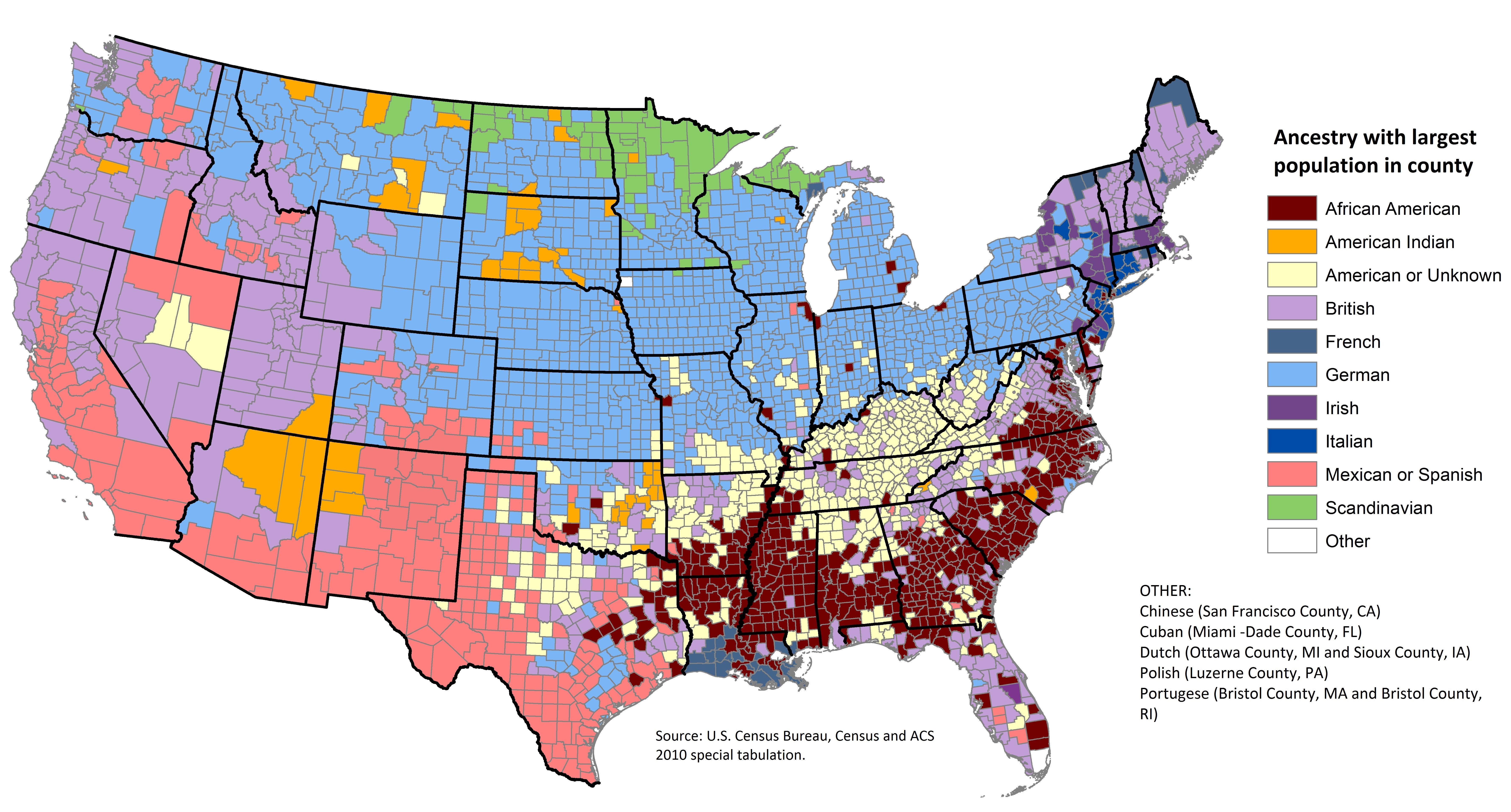
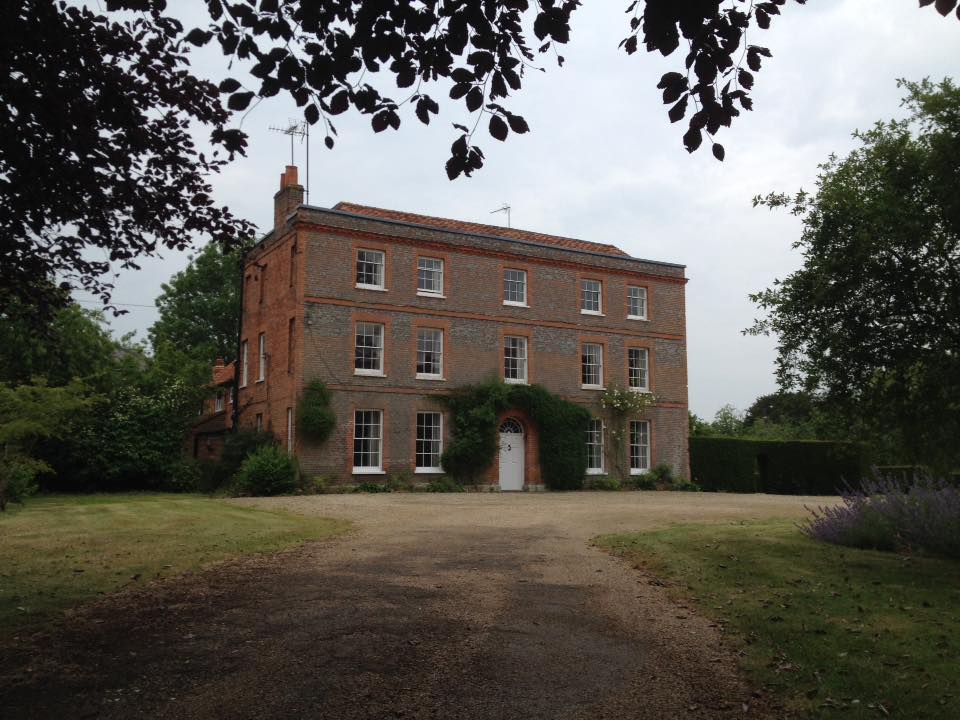
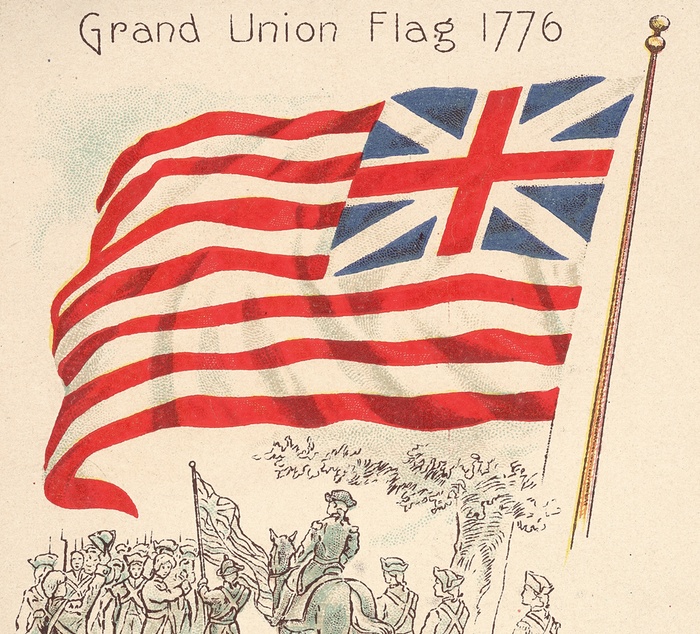
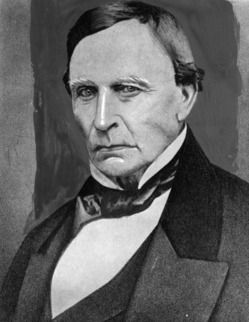

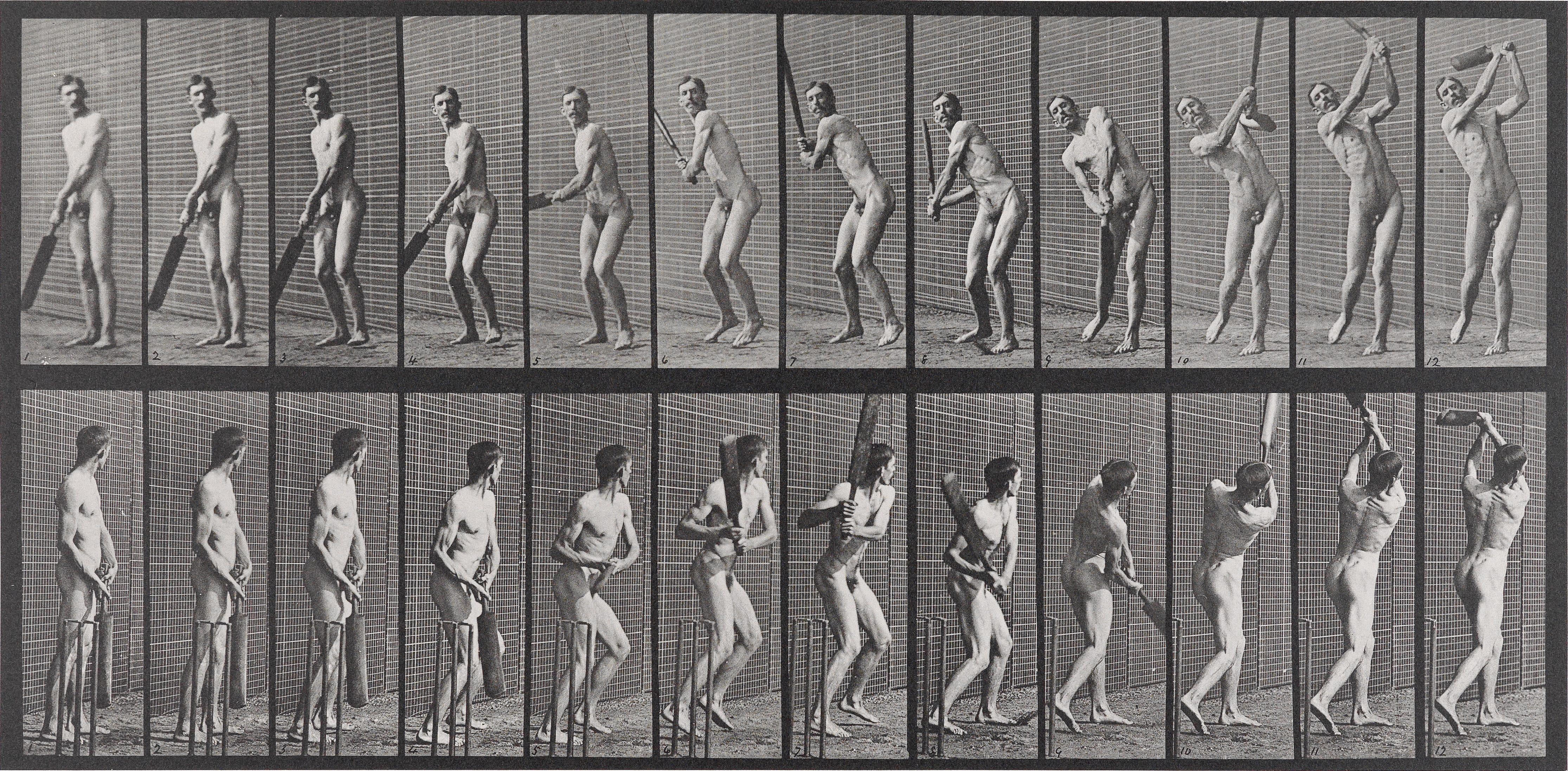
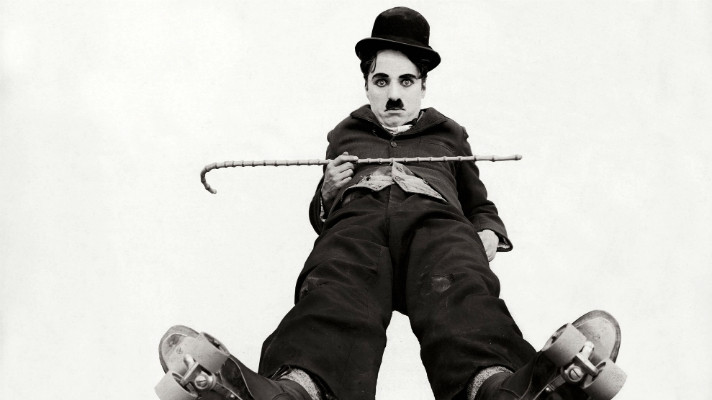
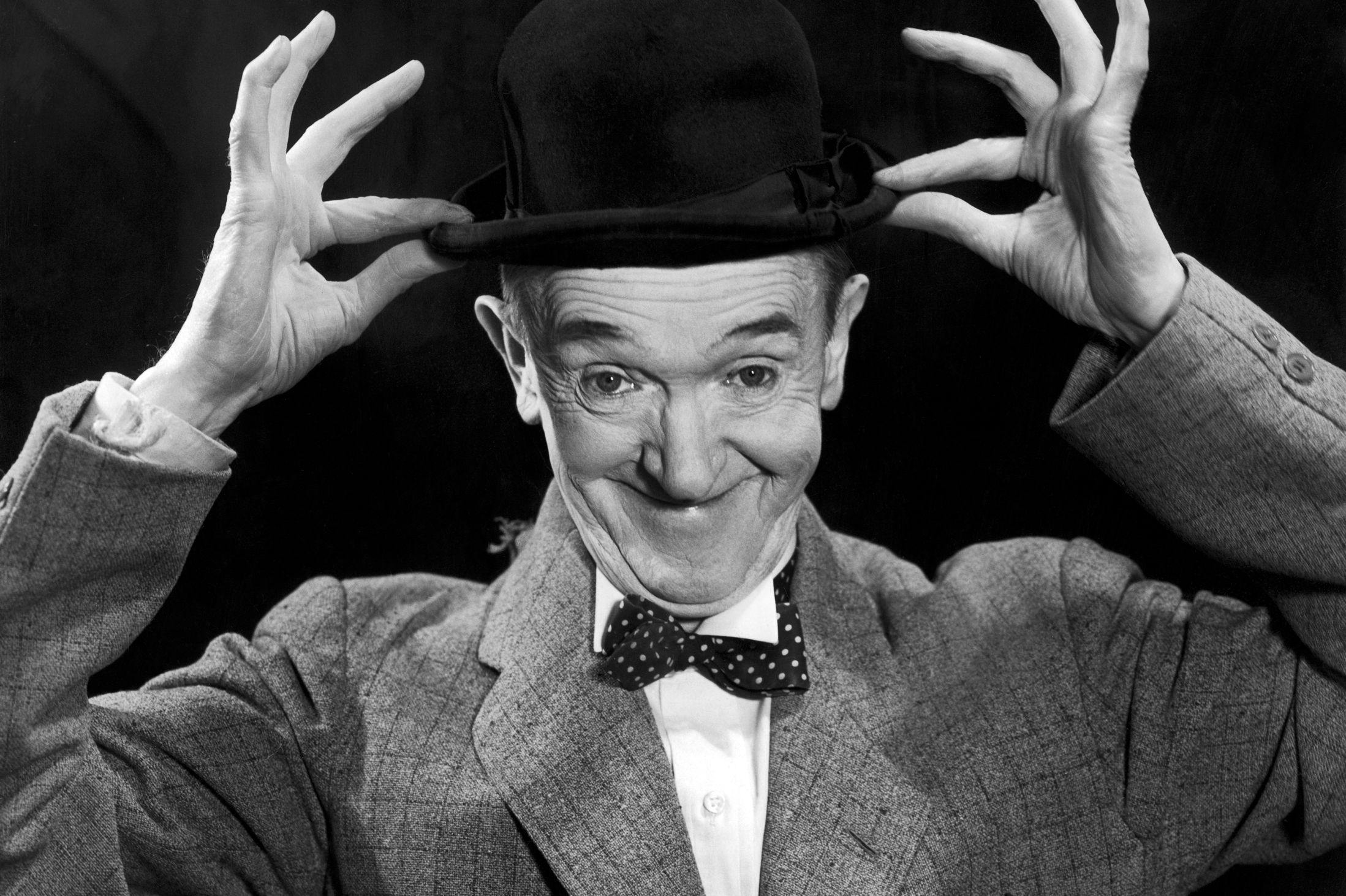
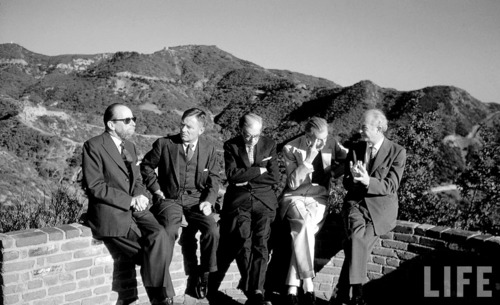

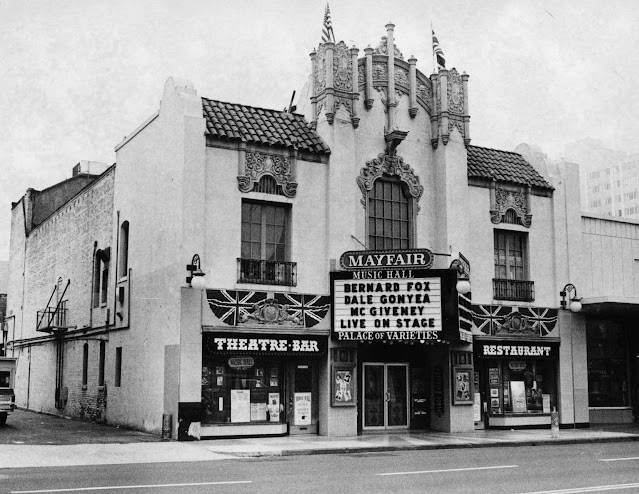

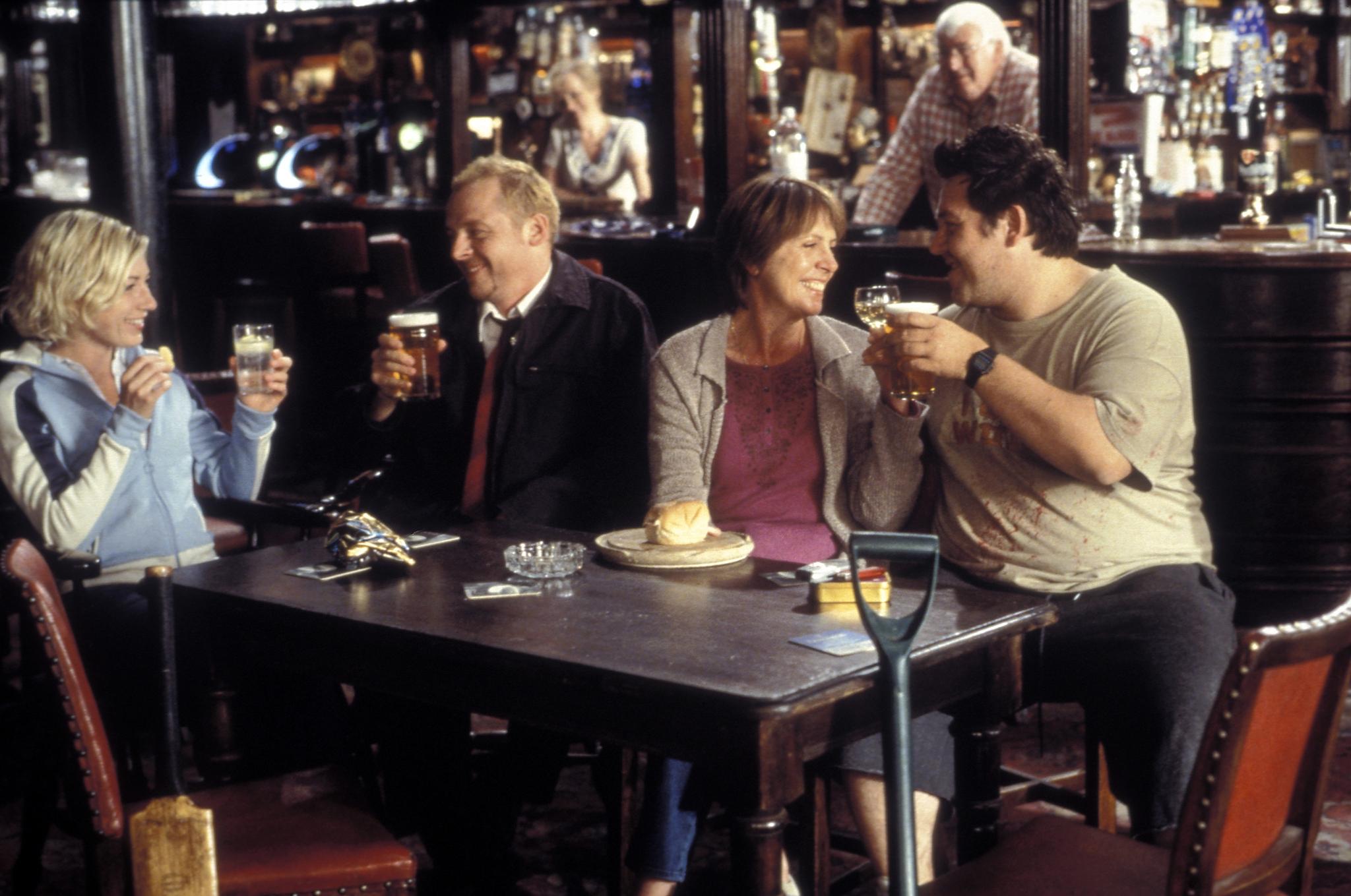
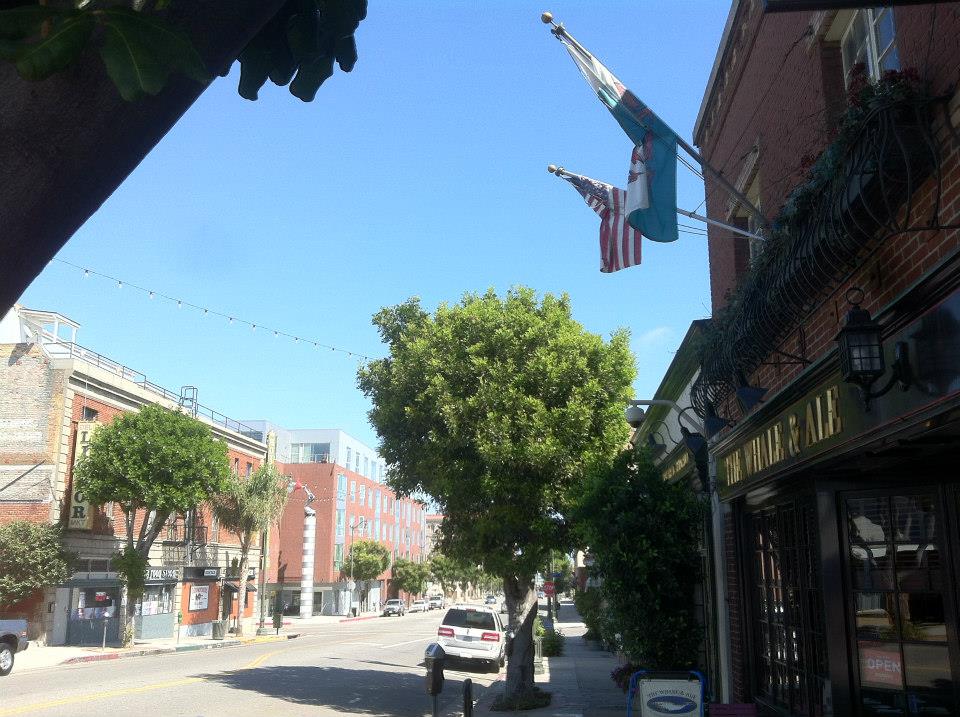

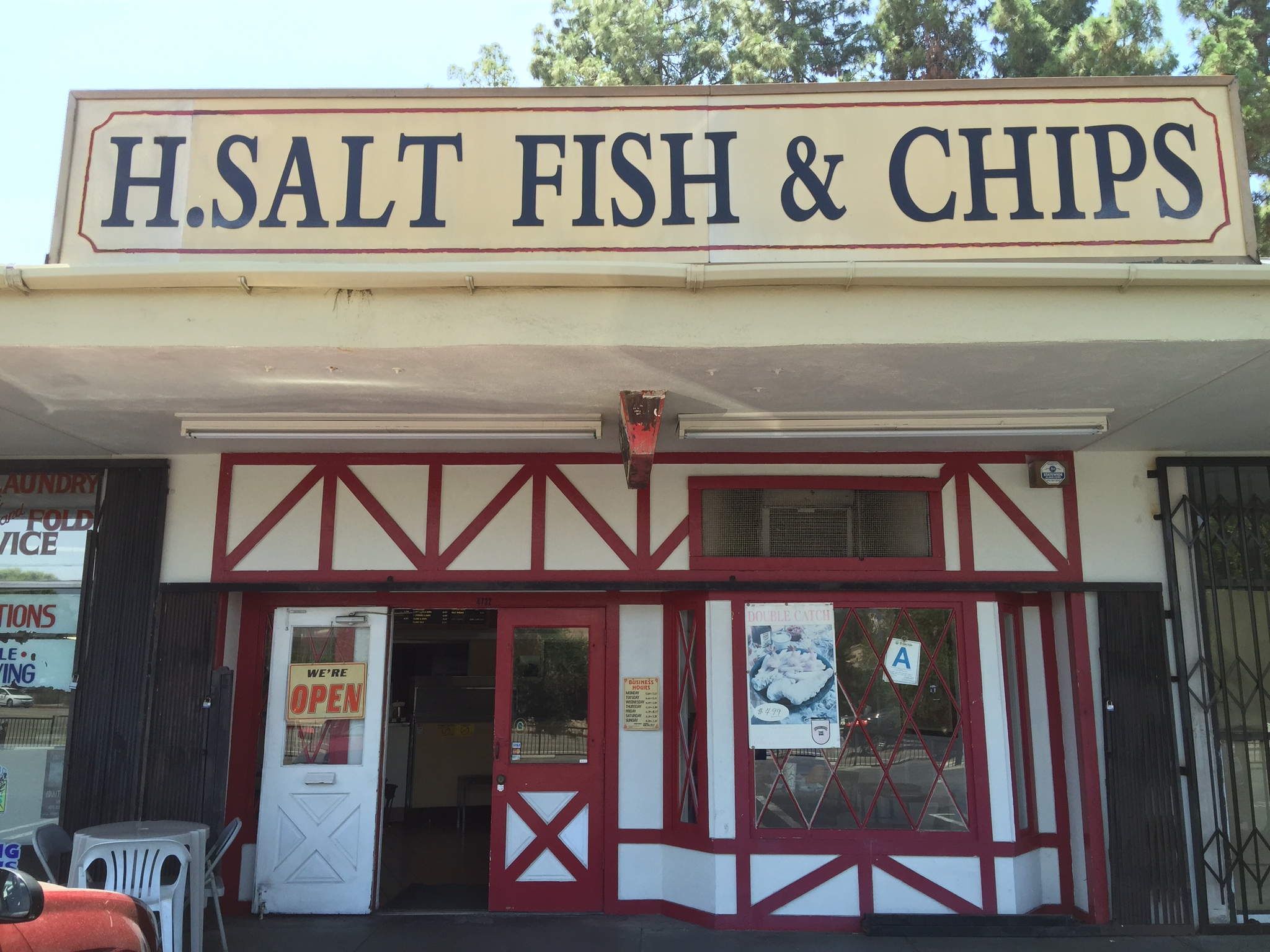
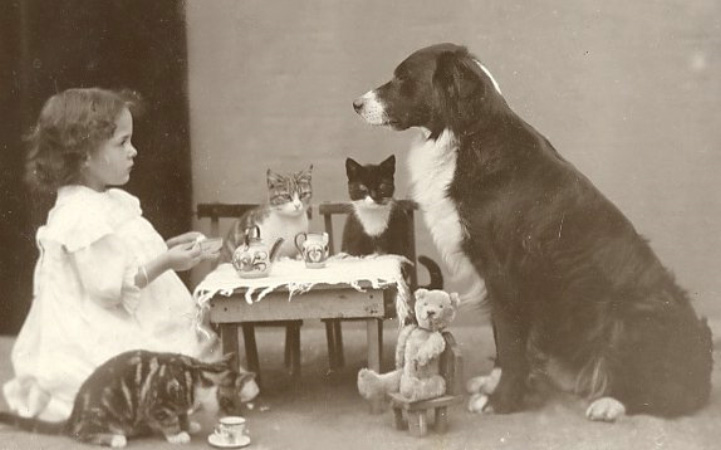
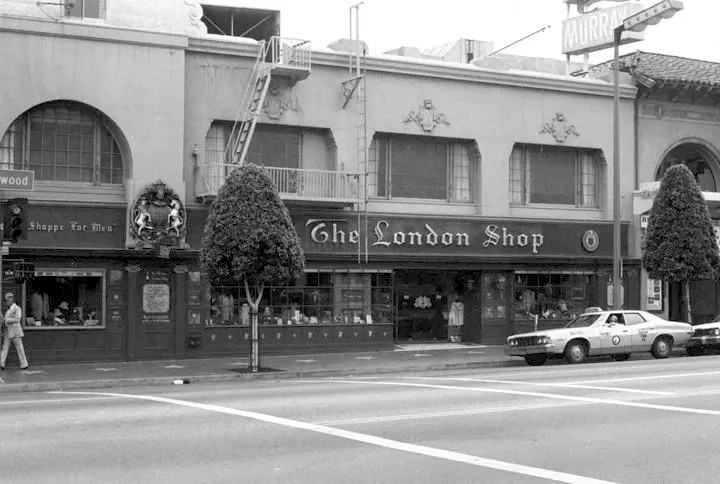
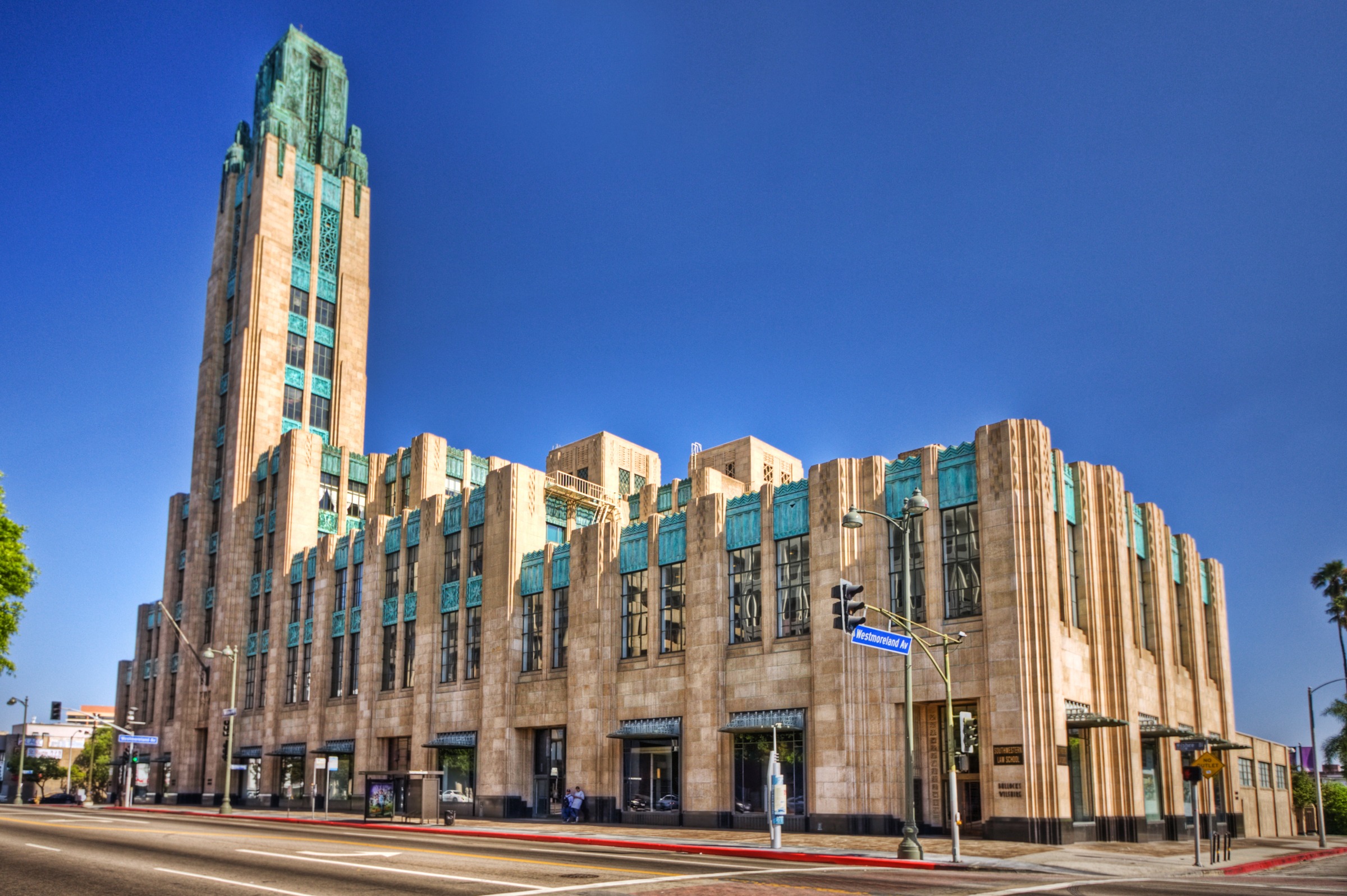
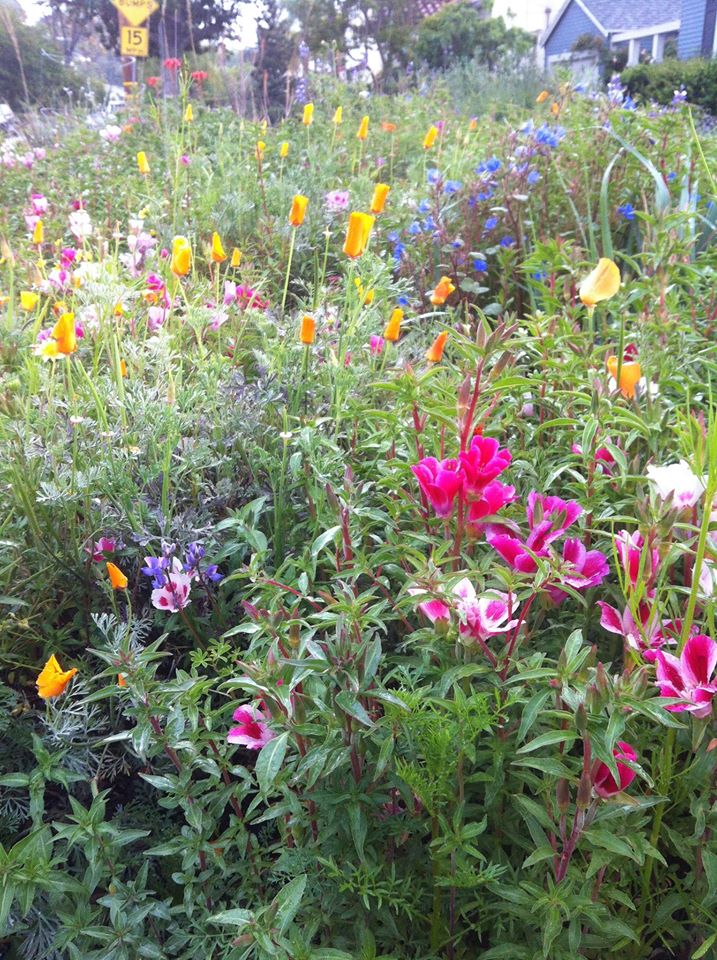

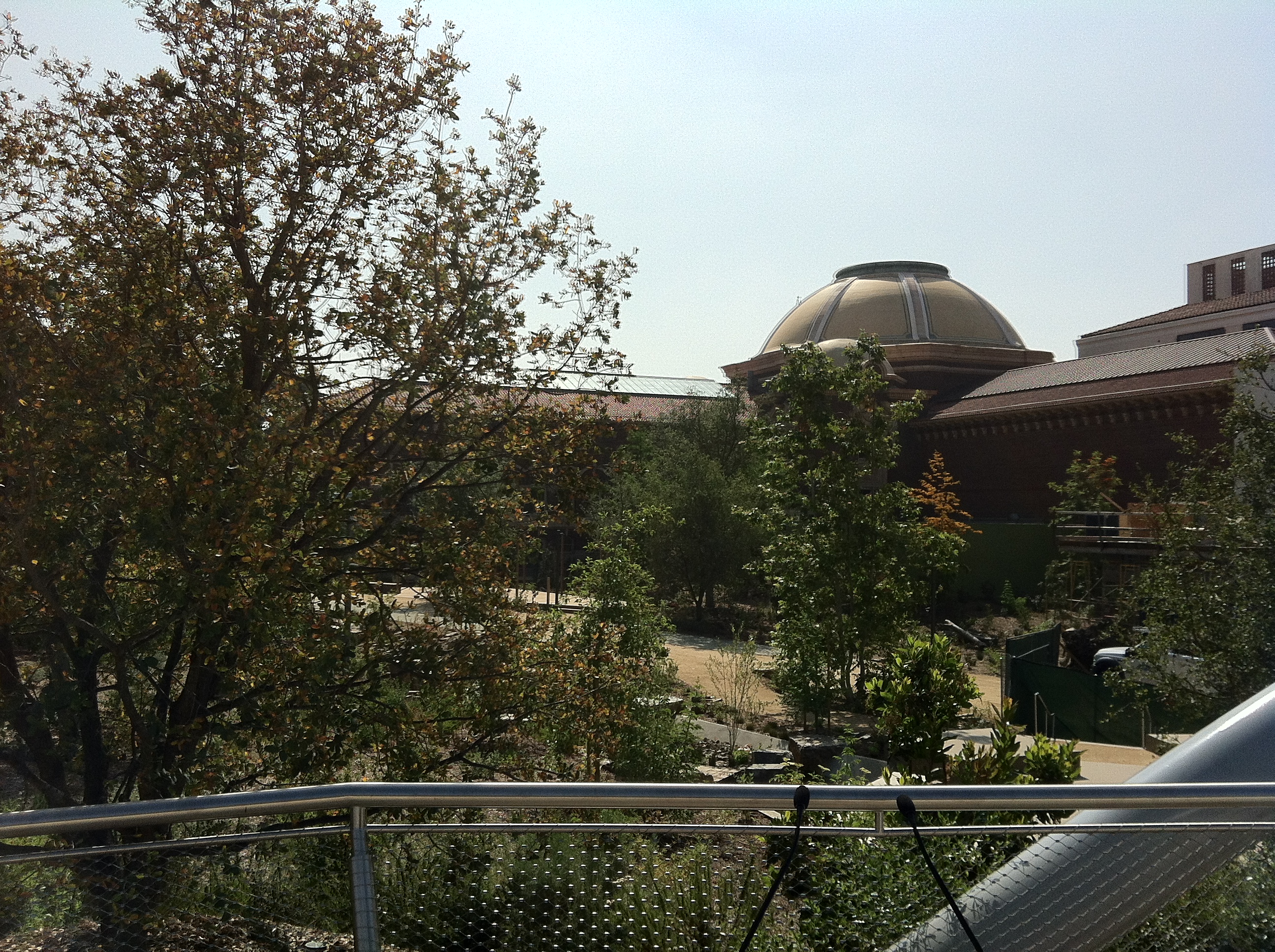

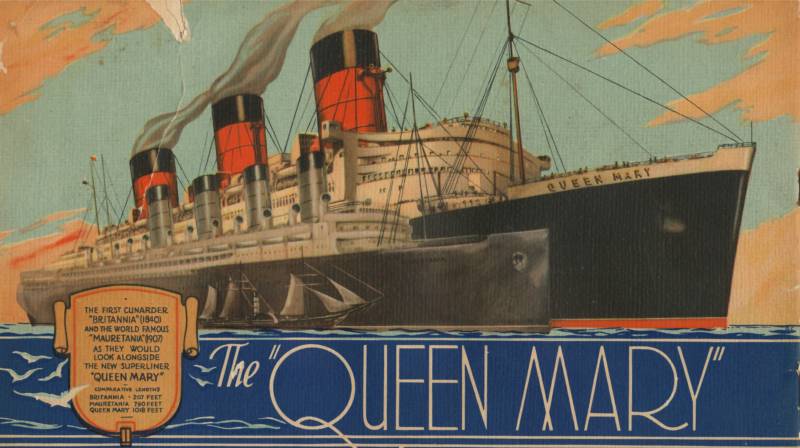
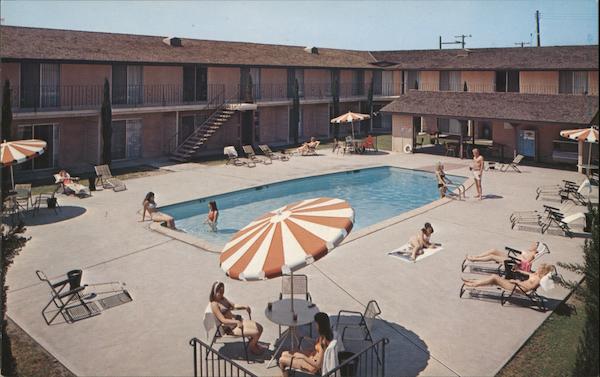
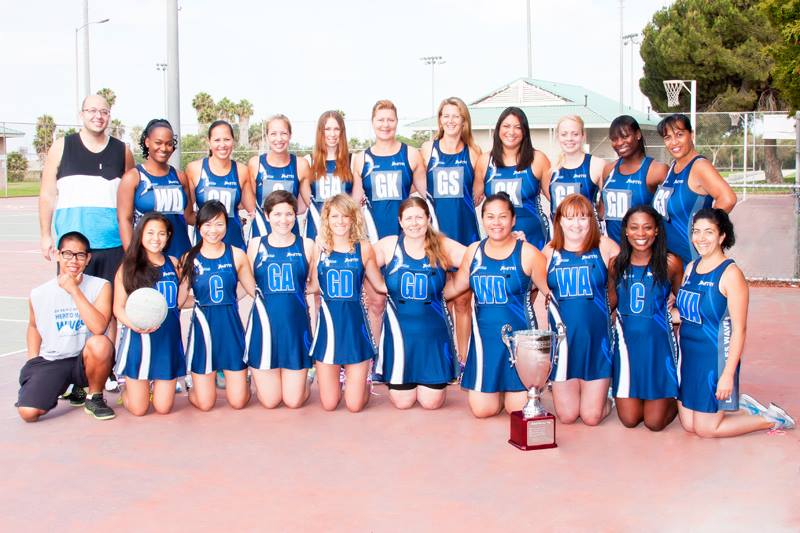


Wow… So much! Just one thing, tbough. Tea is now grown in the UK! Yup! There is a platation in Cornwall, England and another somewhere in Scotland.
LikeLiked by 1 person
I will make note, thanks! I guess that the Cornish tea company is only ten years old and is the first tea plantation in England. I’ll research the Scottish one if I get around to writing a piece on Scottish Los Angeles.
LikeLike
Highly entertaining, thought-provoking and exceptionally well informed post. I am one of those who are of early – but also continuing – British stock. Possibly starting at Jamestown and for certain with William Bradford and others on the Mayflower – and shortly after, most of the other colonies and then here and there continuing into the early 19th Century. But my grand-mother was from Glamis Scotland and one of my uncles married the daughter of a British Petroleum geologist when he was stationed in Venezuela.
Now about the only thing you did not cover was the very important role Brits – and Scotch and Irish – played in Mexican and Spanish Los Angeles. So I did a little cut and paste for you, but am not certain how to pass it on to you – but here’s a shot:
A few of the pre-Gold Rush Brits, Scotch and Irish in Early LA
David and William Workman – here is a book recently published on the two Workman brothers
http://www.bookscumbria.com/cgi-bin/trolleyed_public.cgi?action=showprod_5612
Andrew Boyle – Irish and read of his adventures just getting to LA after he arrived in the US. They could be a mini-series in themselves.
http://boyleheightshistoryblog.blogspot.com/2009/08/andrew-boyle-namesake-of-boyle-heights.html
James McKinly, a native of Scotland, arrived at Los Angeles in 1824,
being then twenty-one years of age; he kept a store for a time on Commercial
street. He afterward went to Monterey.
James Johnson, an Englishman, came by water from Sonora to Los Angeles
in 1833, with a cargo of Mexican and Chinese goods. Shortly afterward he
purchased the San Pedro Rancho, where he was for a number of years an extensive
cattle dealer. Then he removed to Los Angeles and engaged in the warehouse and
forwarding business between that town and San Pedro. He died prior to 1862.
Hugh Reid (or Hugo Perfecto Reid), a native of Scotland, came to Los
Angeles in 1835, and he was a merchant here in company with William Keith and
Jacob P. Leese. He had formerly lived in Sonora, whence he had come to Los
Angeles to wed his betrothed, a beautiful Mexican girl. Finding that she had
just jilted him to marry a Spanish officer, his disposition was so soured that
he retired in his chagrin to San Gabriel, where he married an Indian woman. He
was a man of studious tastes, and he entered deeply into the study of the
aborigines. His notes on these subjects are the most valuable guide possessed by
the ethnological student of to-day, insomuch as regards these races. At one time
Hugo Reid owned the Santa Anita Rancho, and other large property, most of which
came to him with his Indian wife. He was a very conspicuous figure in the early
history of Los Angeles; he was a member of the first State Constitutional
Convention of 1849. He died at Los Angeles, December 12, 1852.
Michael White, born in England in 1801, emigrated to Lower California in
1817, and commanded a vessel for some years. He became wealthy, and settled in
Los Angeles. His house still stands in San Marino.
William Workman, born in England in 1800, arrived in Los Angeles with
John Rowland’s party in 1831.
Henry Dalton, English, resided in Los Angeles prior to 1845, and was a
merchant there at the time of the American occupation. He was the owner of the
Azuza Rancho. He has been dead some years.
David W. Alexander, an Irishman by birth, came to Los Angeles from
Mexico about 1841 or ’42. He ranched at the Rincon Rancho, San Bernardino
County, for a time, and then kept a store in Los Angeles. He was elected sheriff
of the county on September 5, 1855, serving that term, and he again filled that
office in 1876 and 1877. He is dead since some years.
LikeLike
Thanks for all that — I updated the post. That early English-Californian history is important and interesting!
LikeLike
awsome
LikeLike